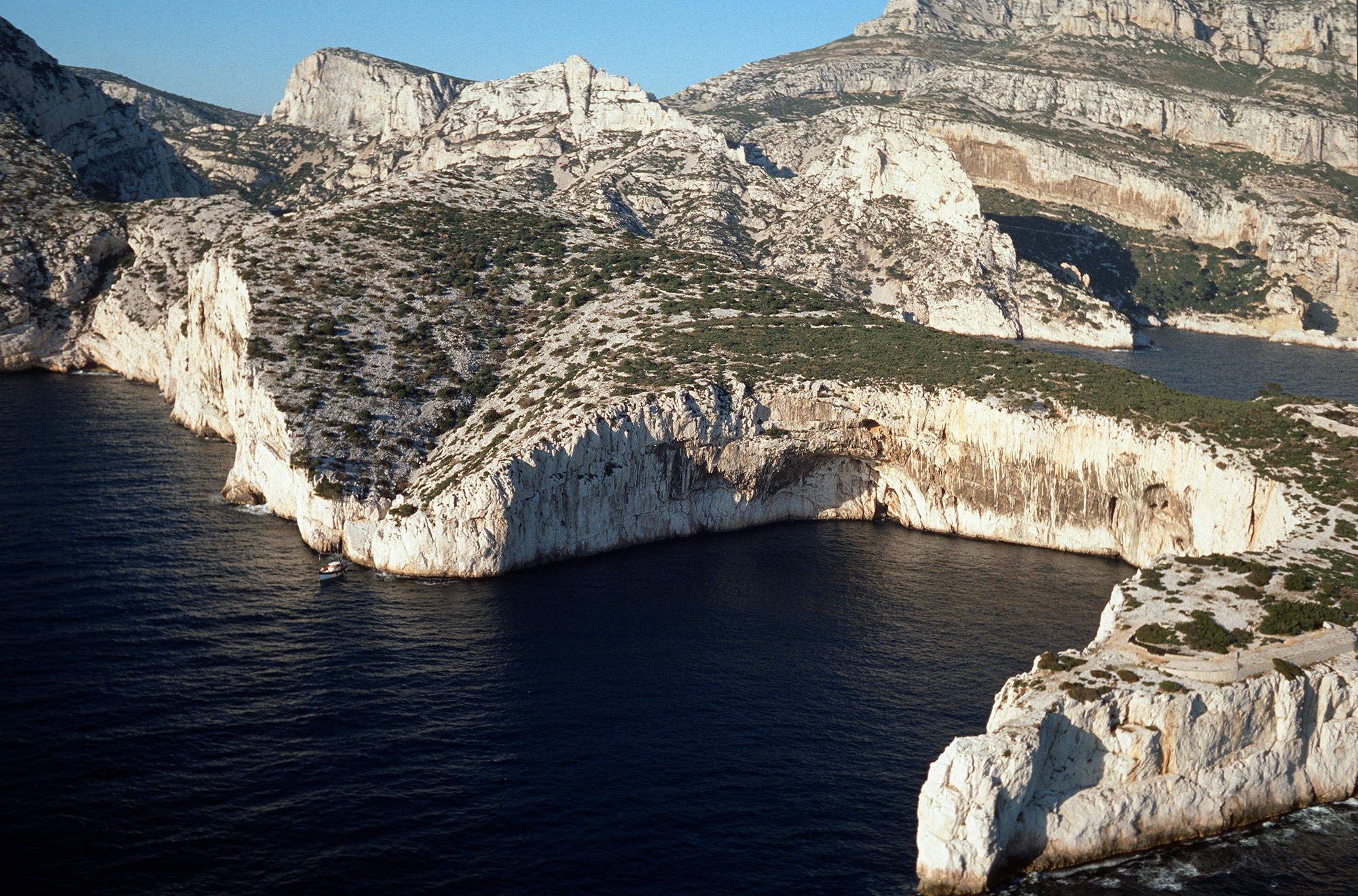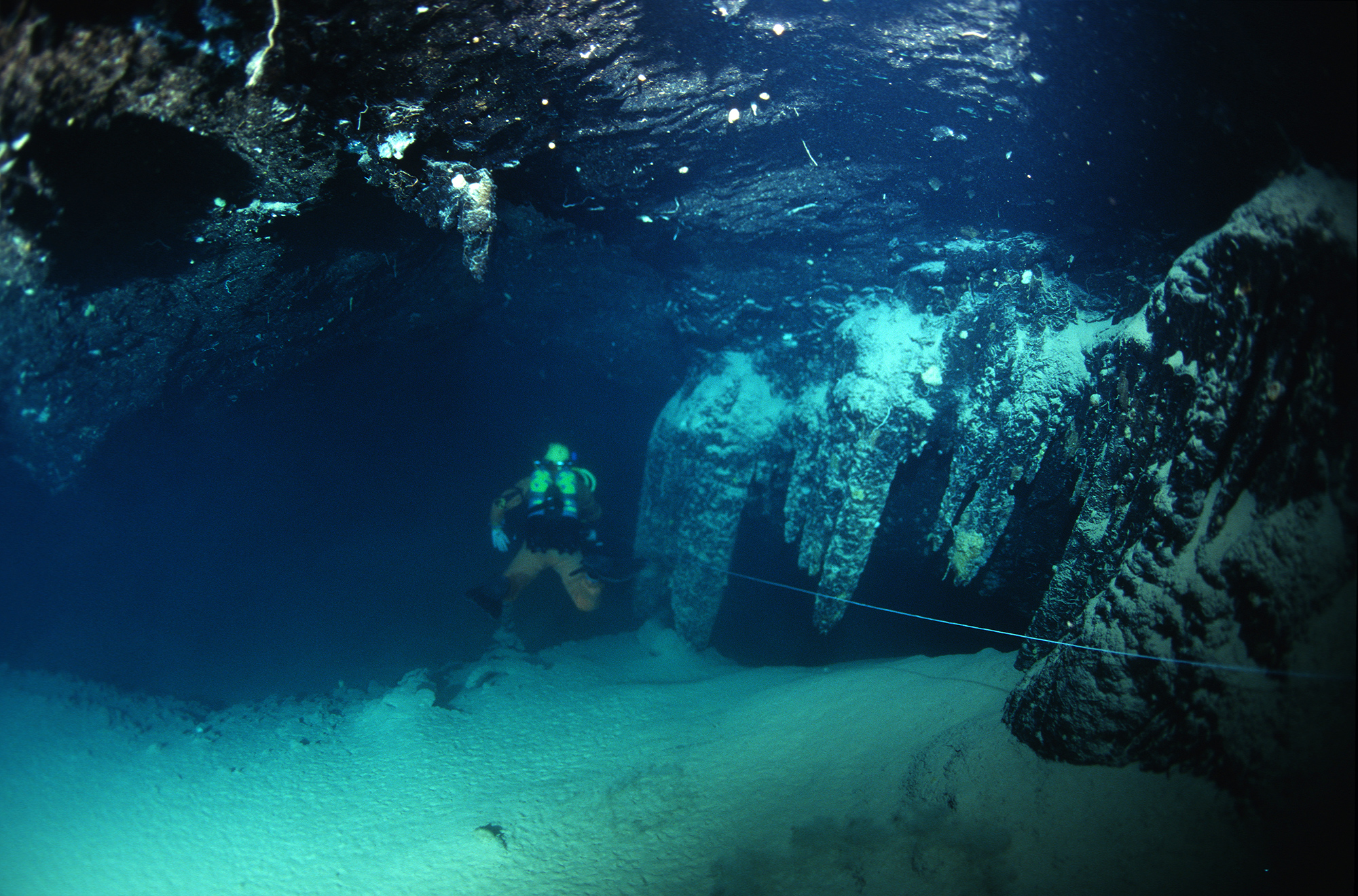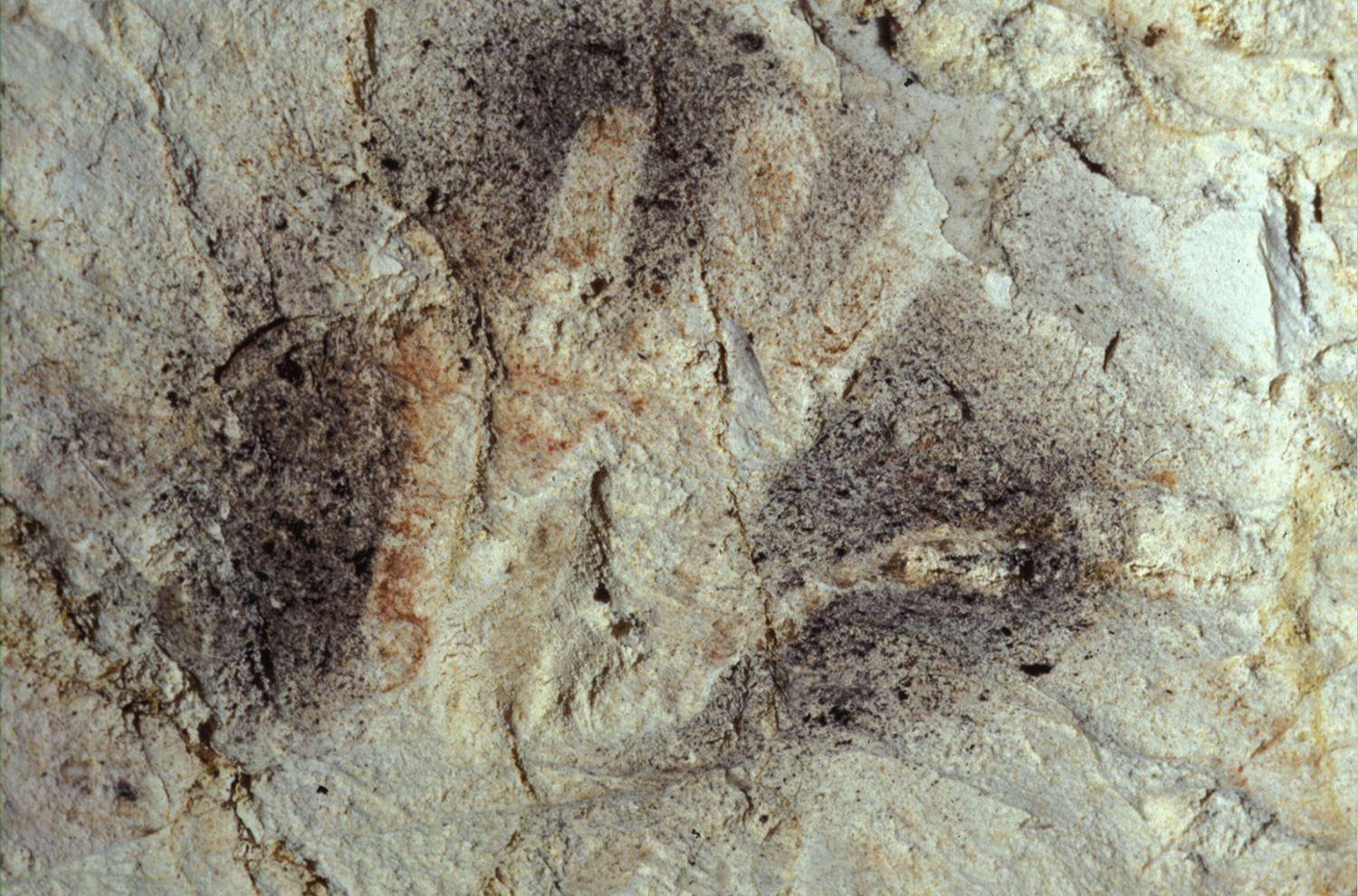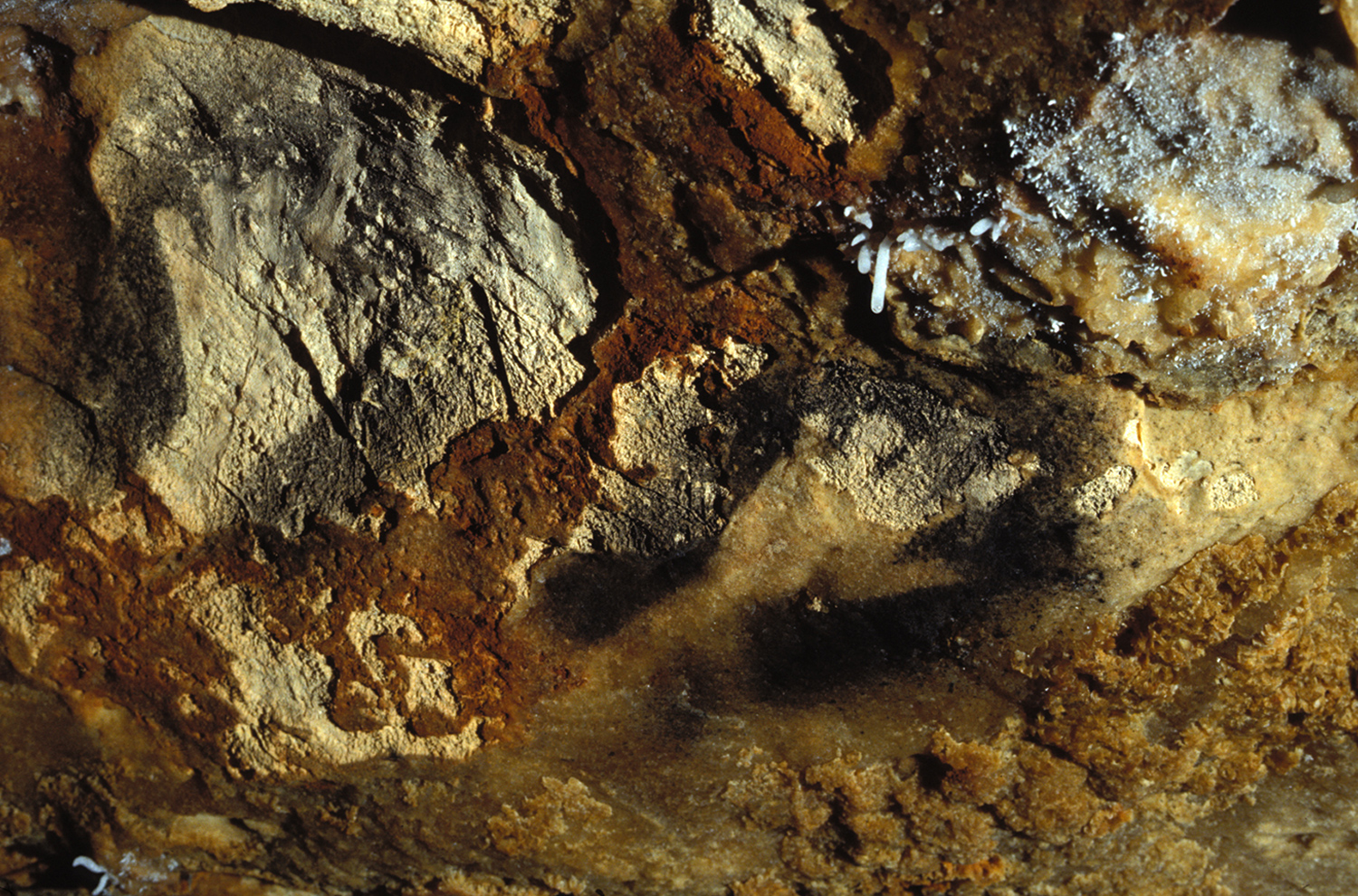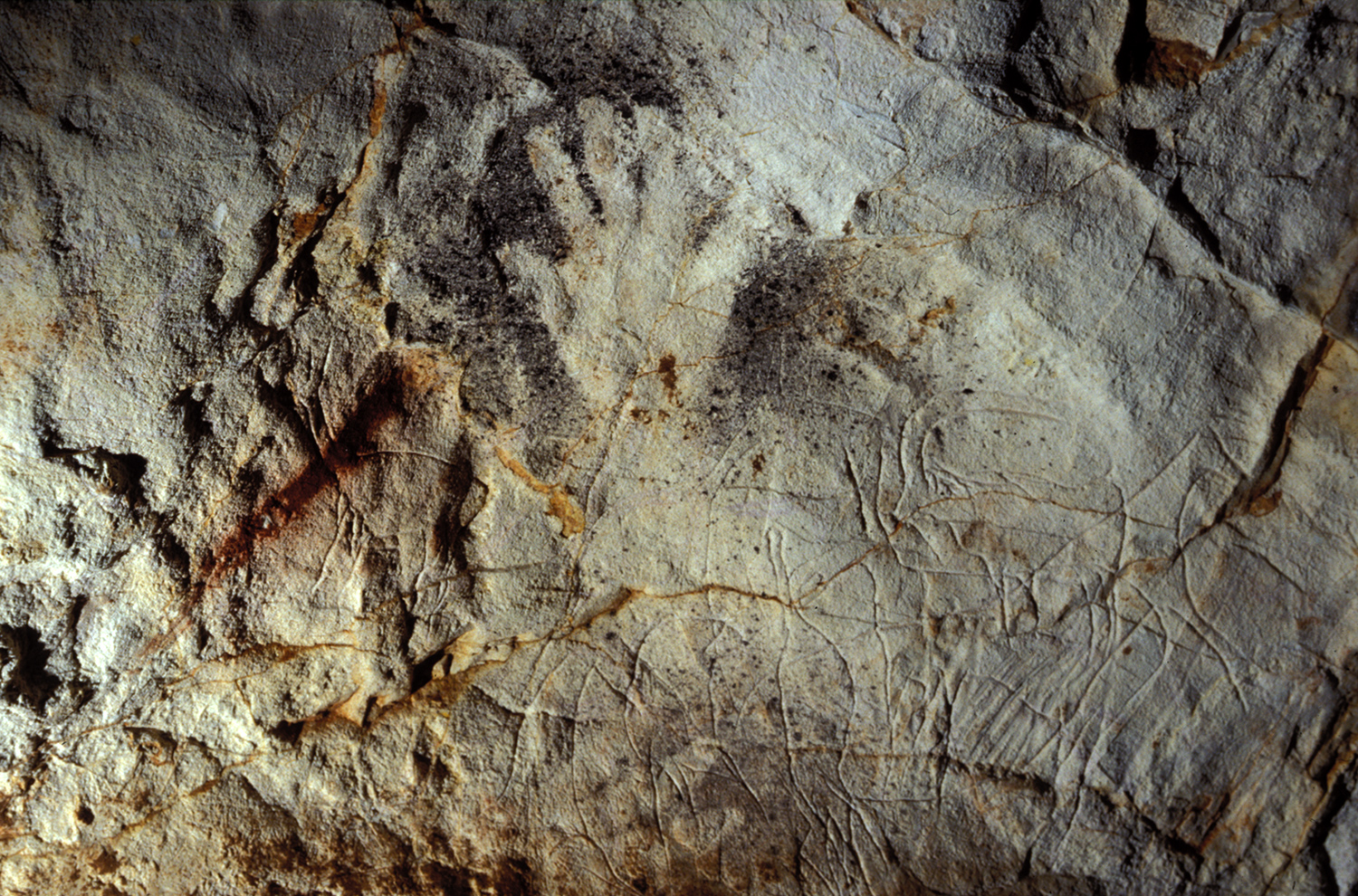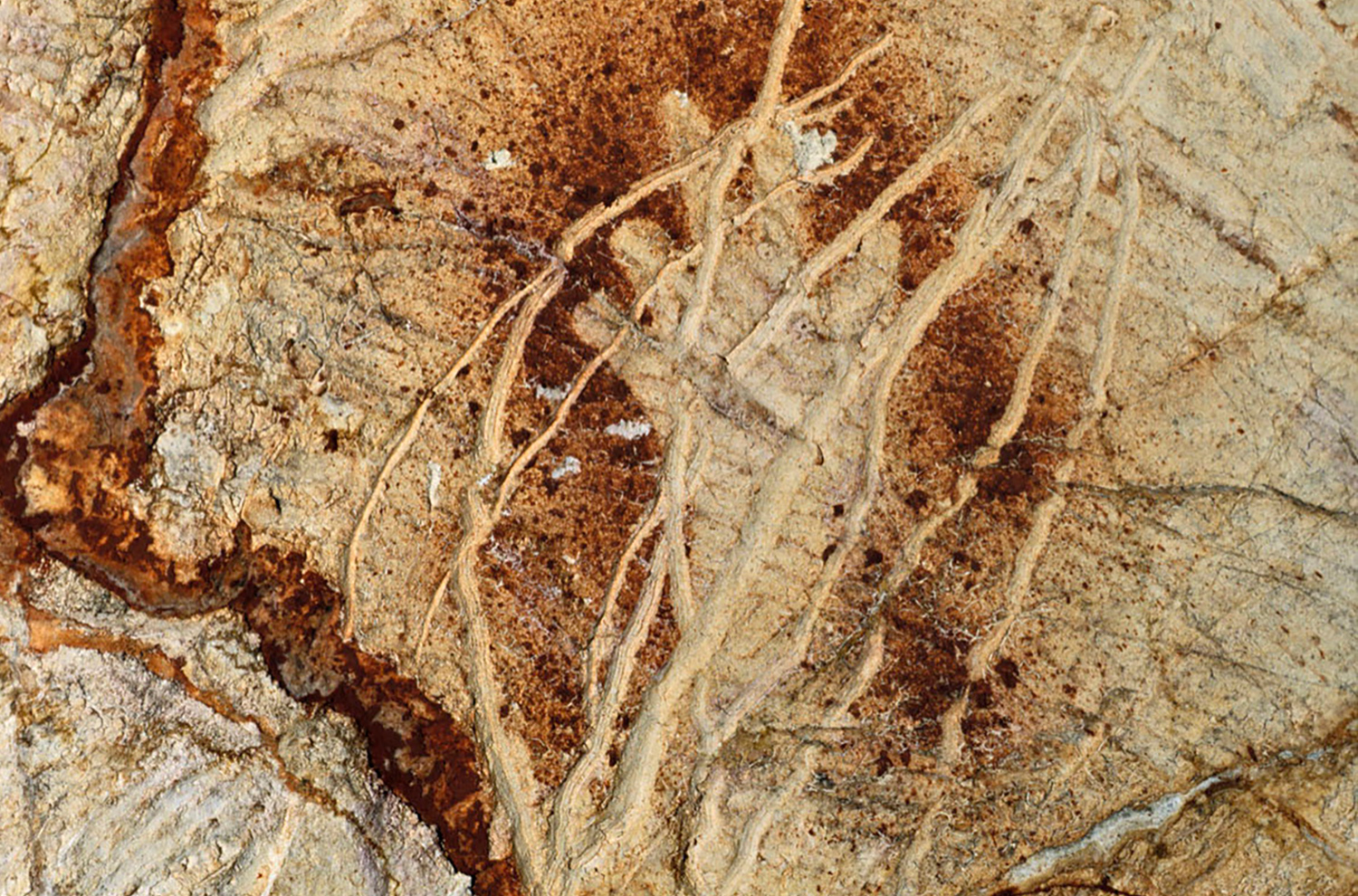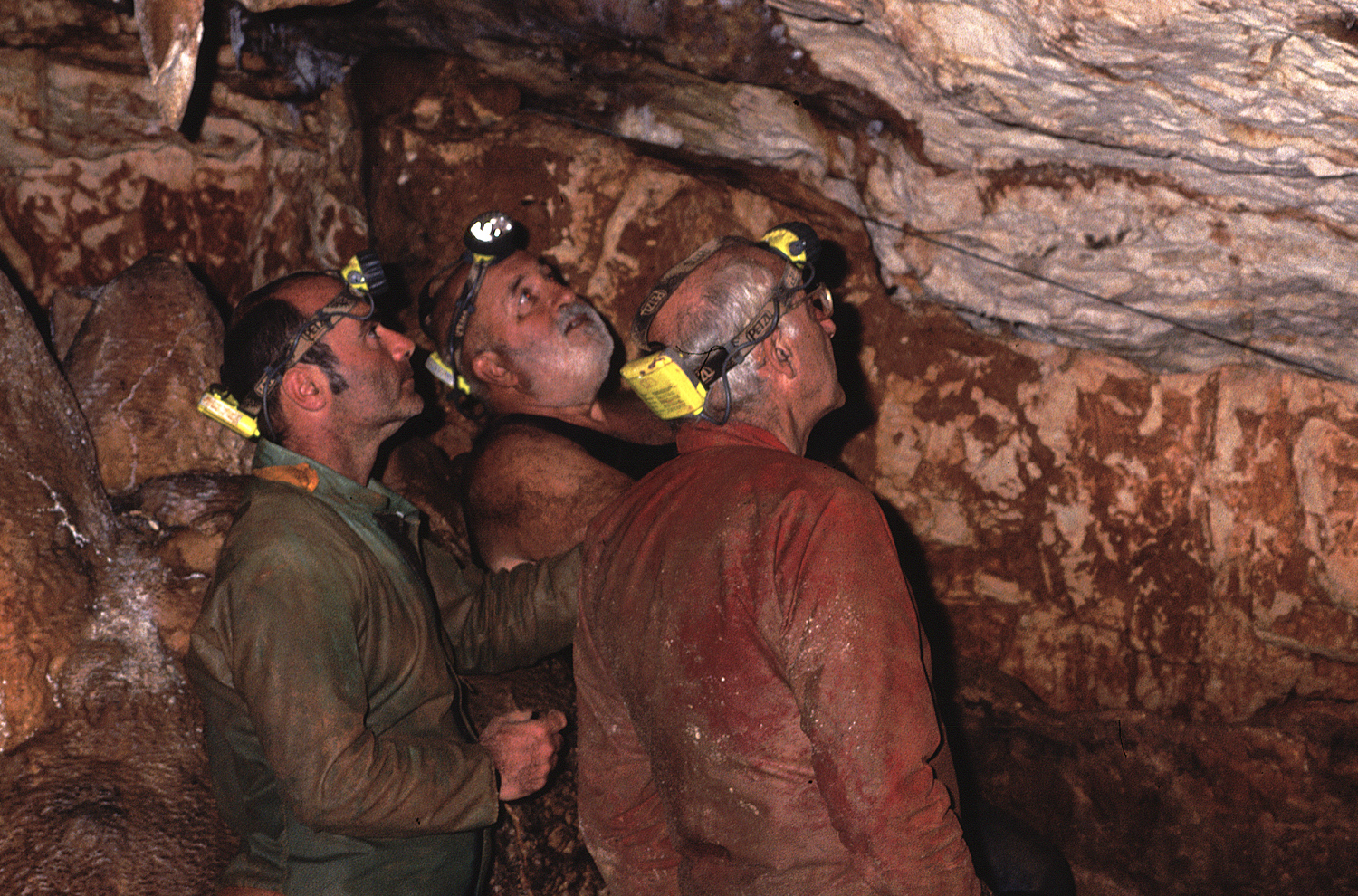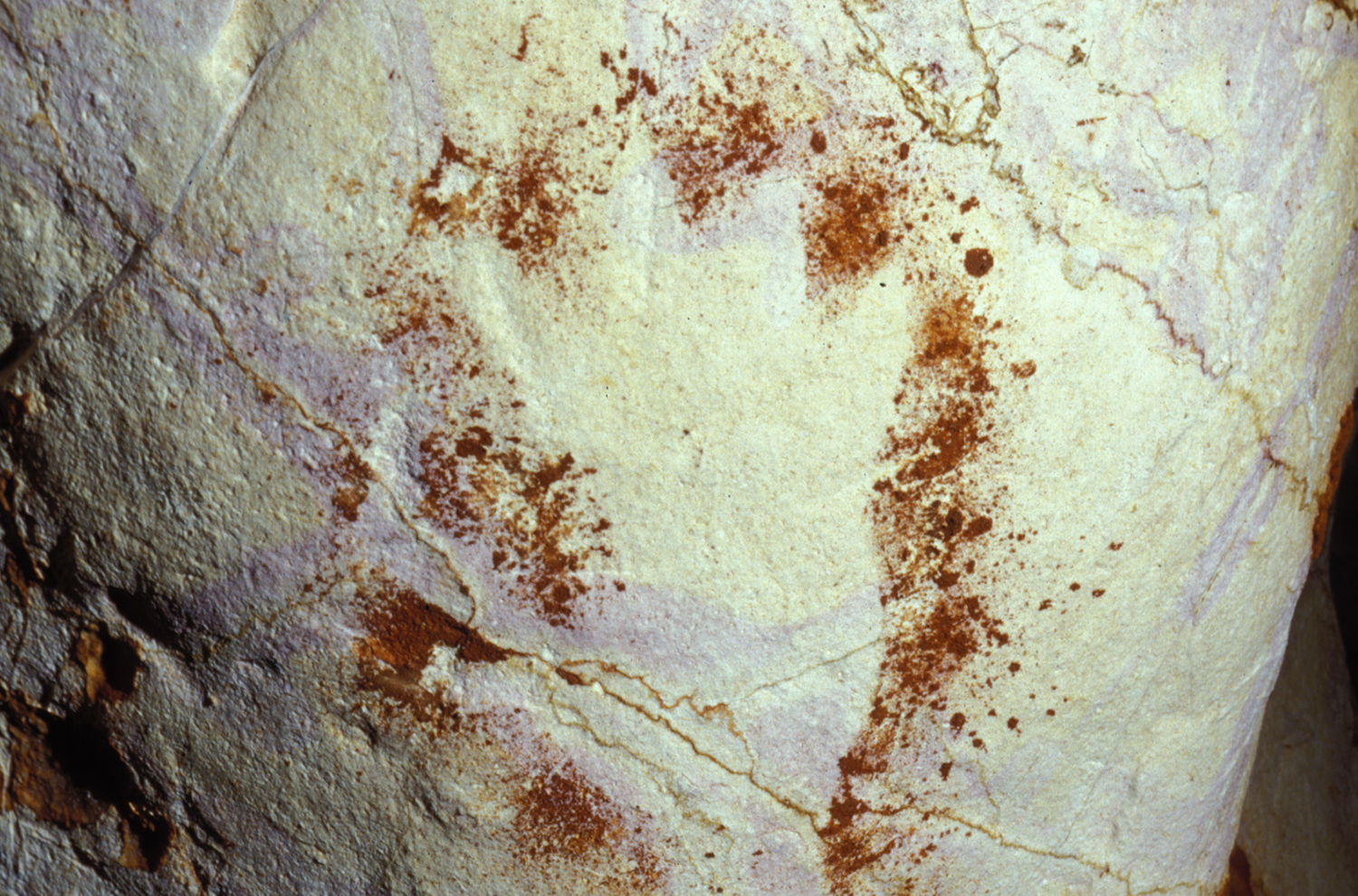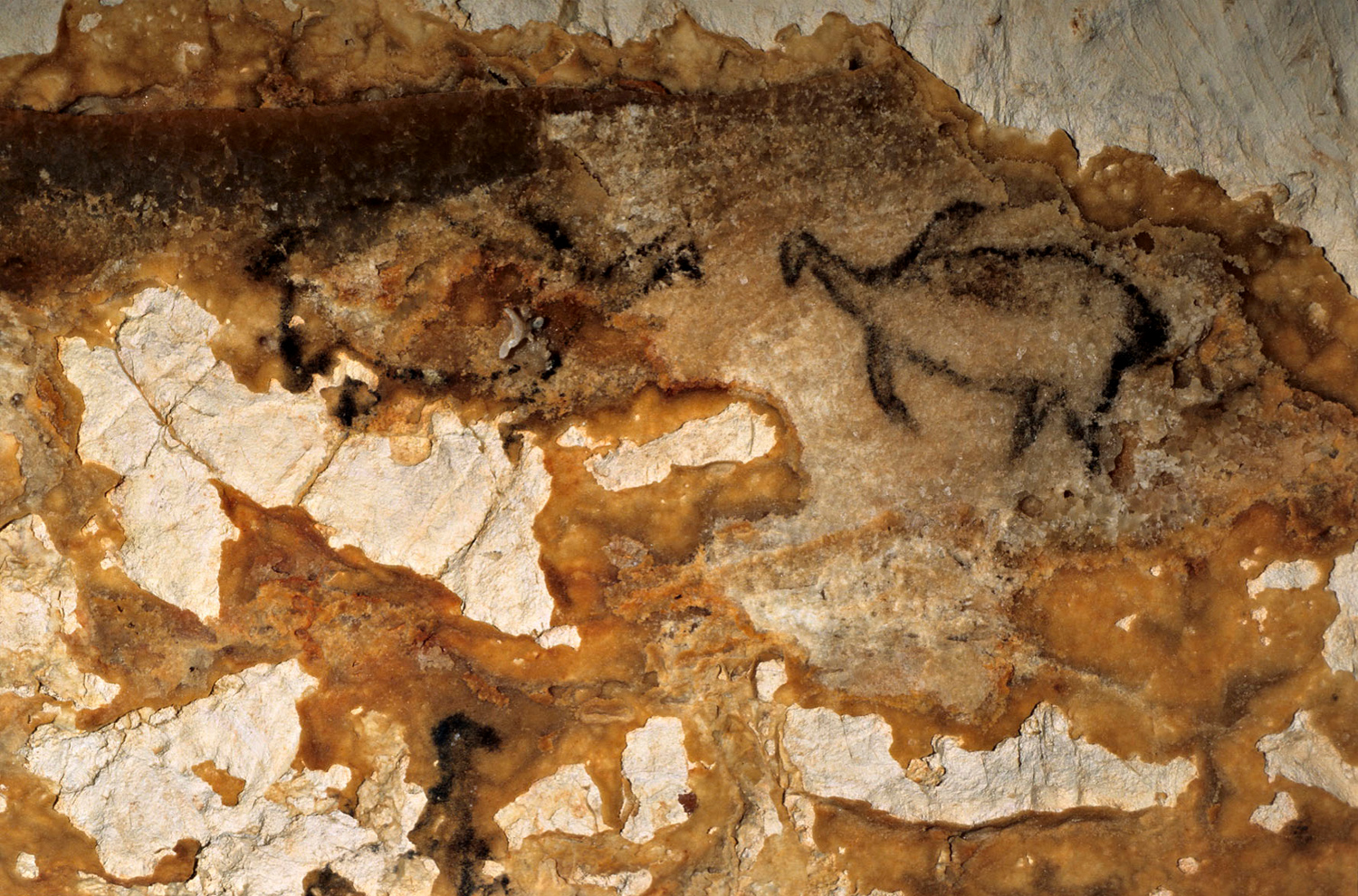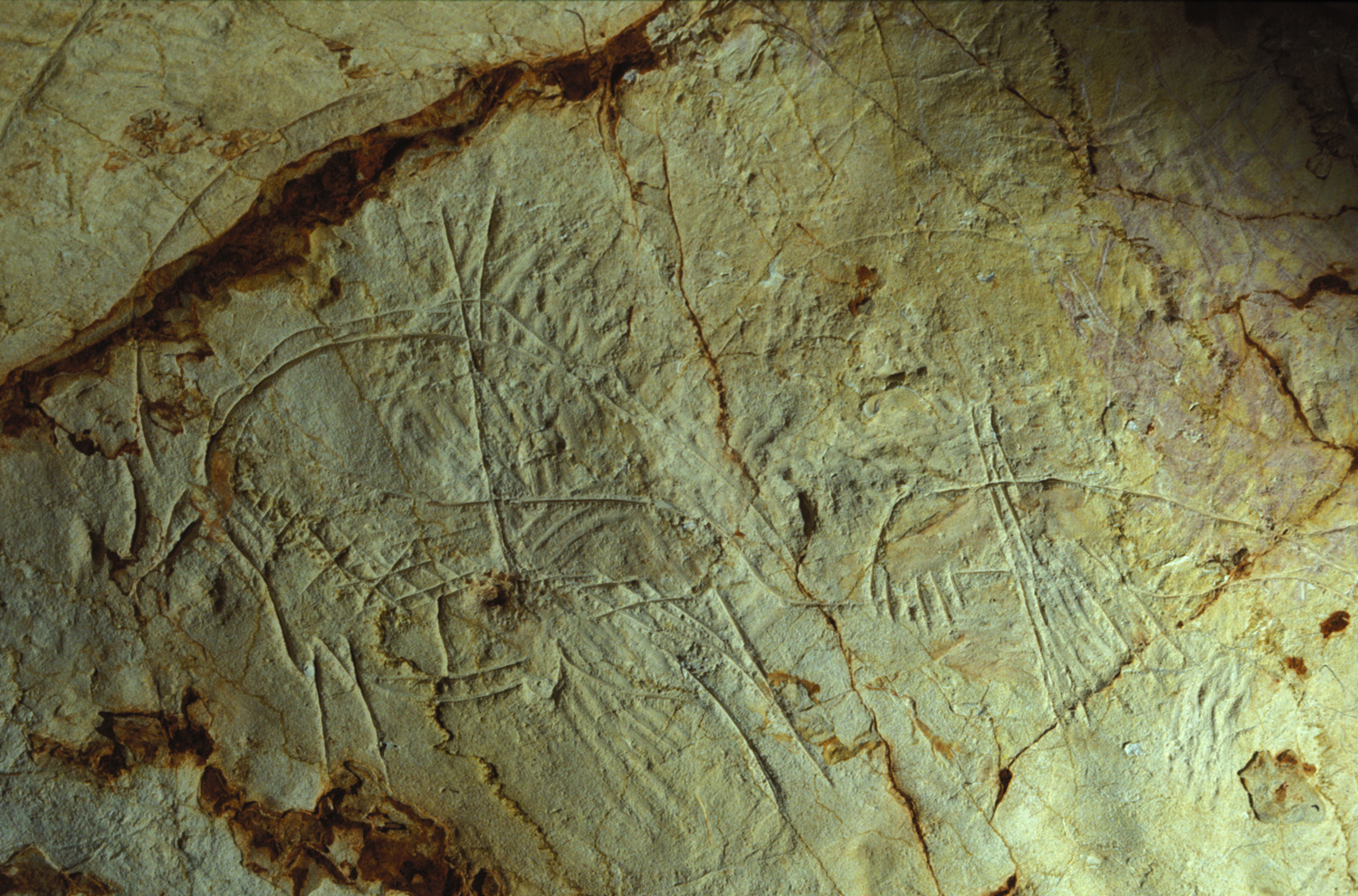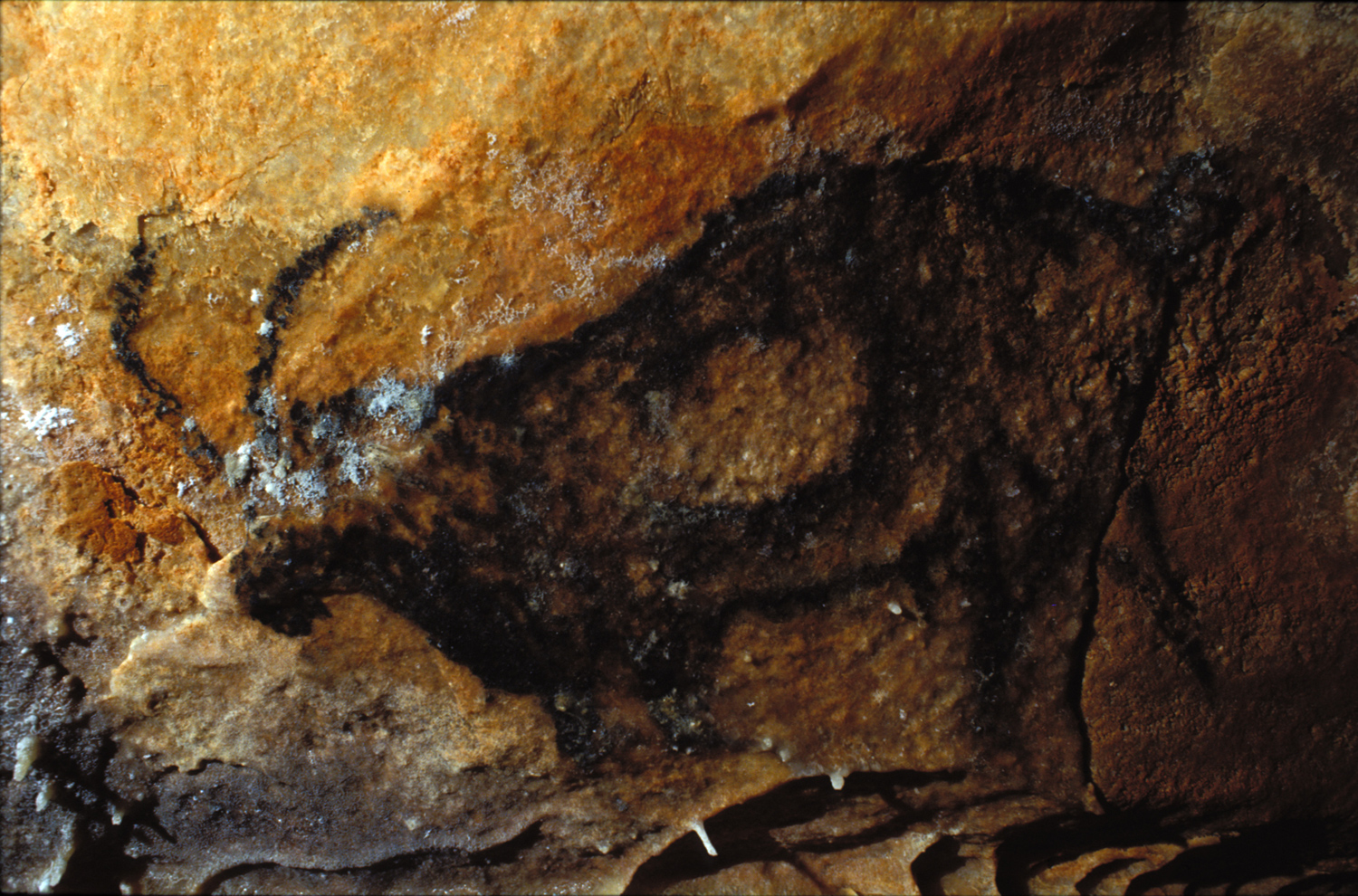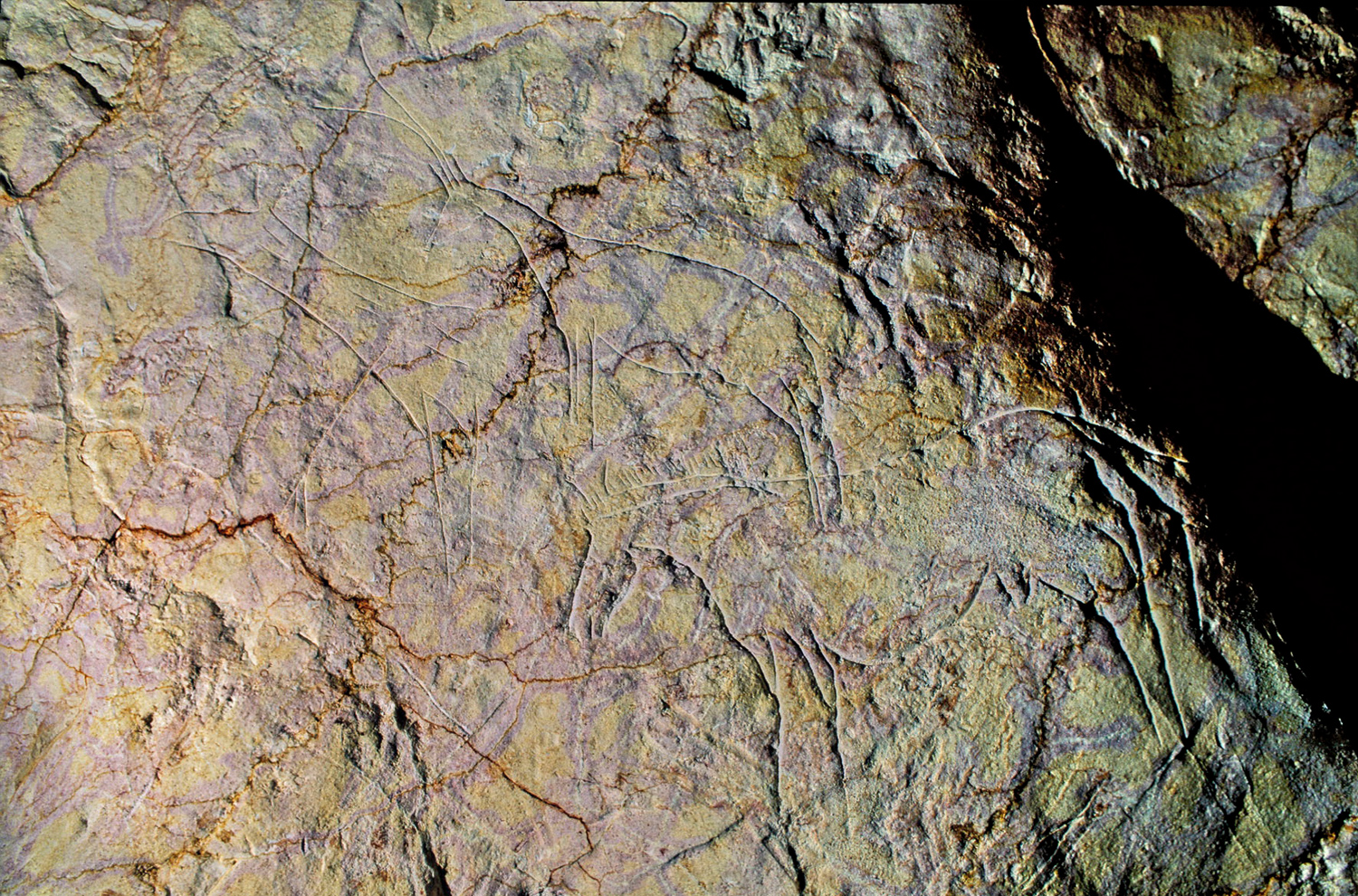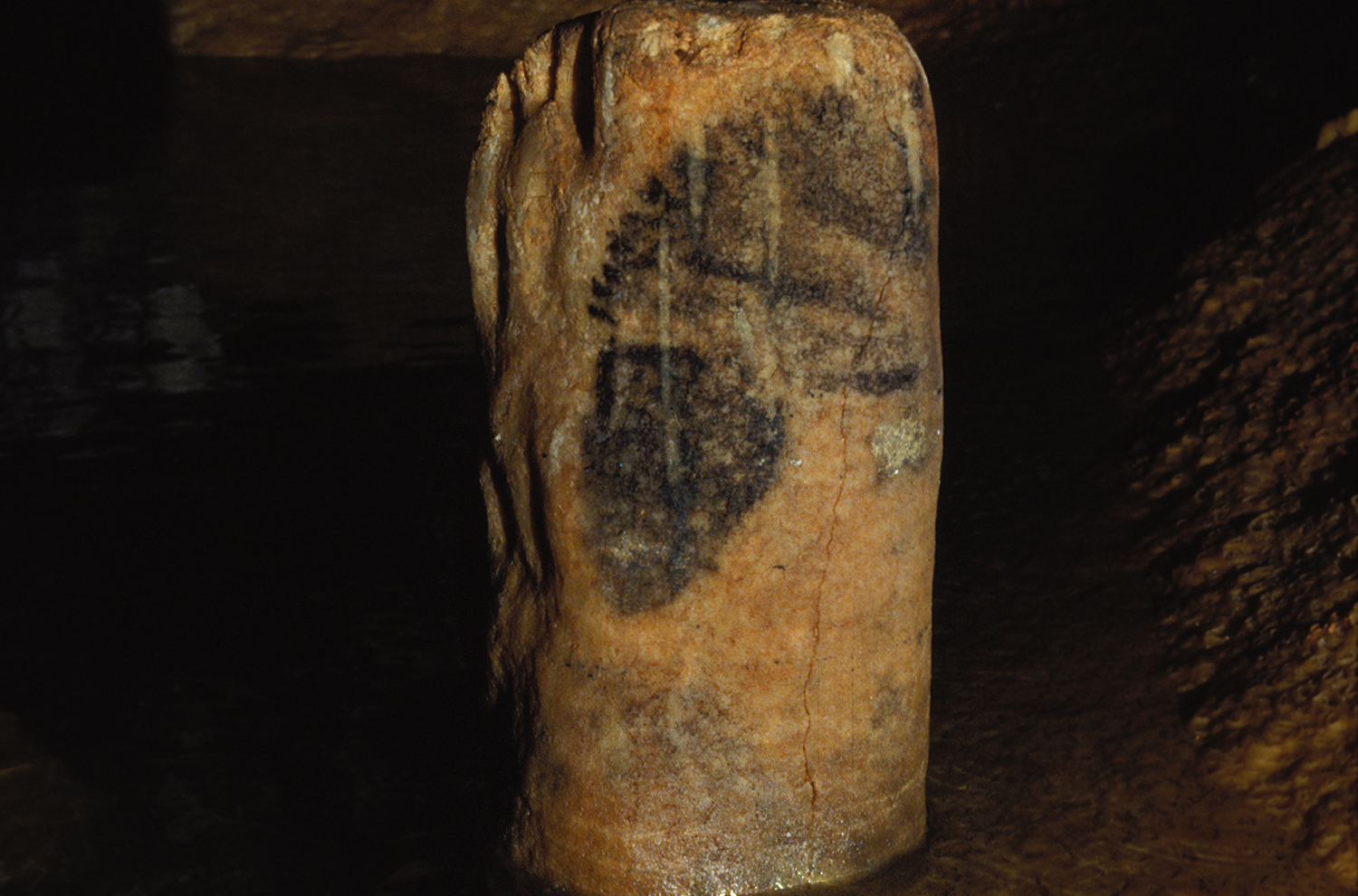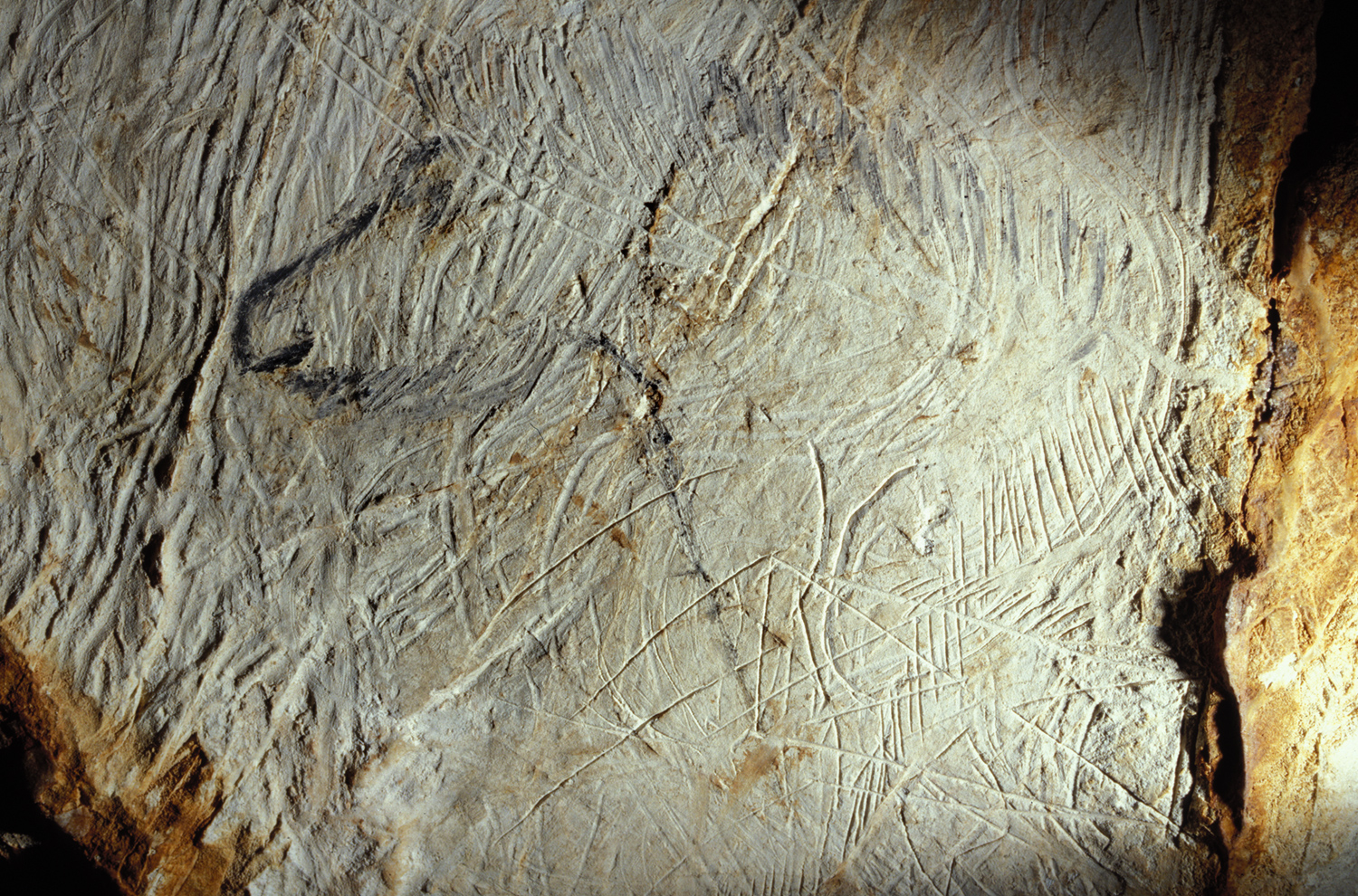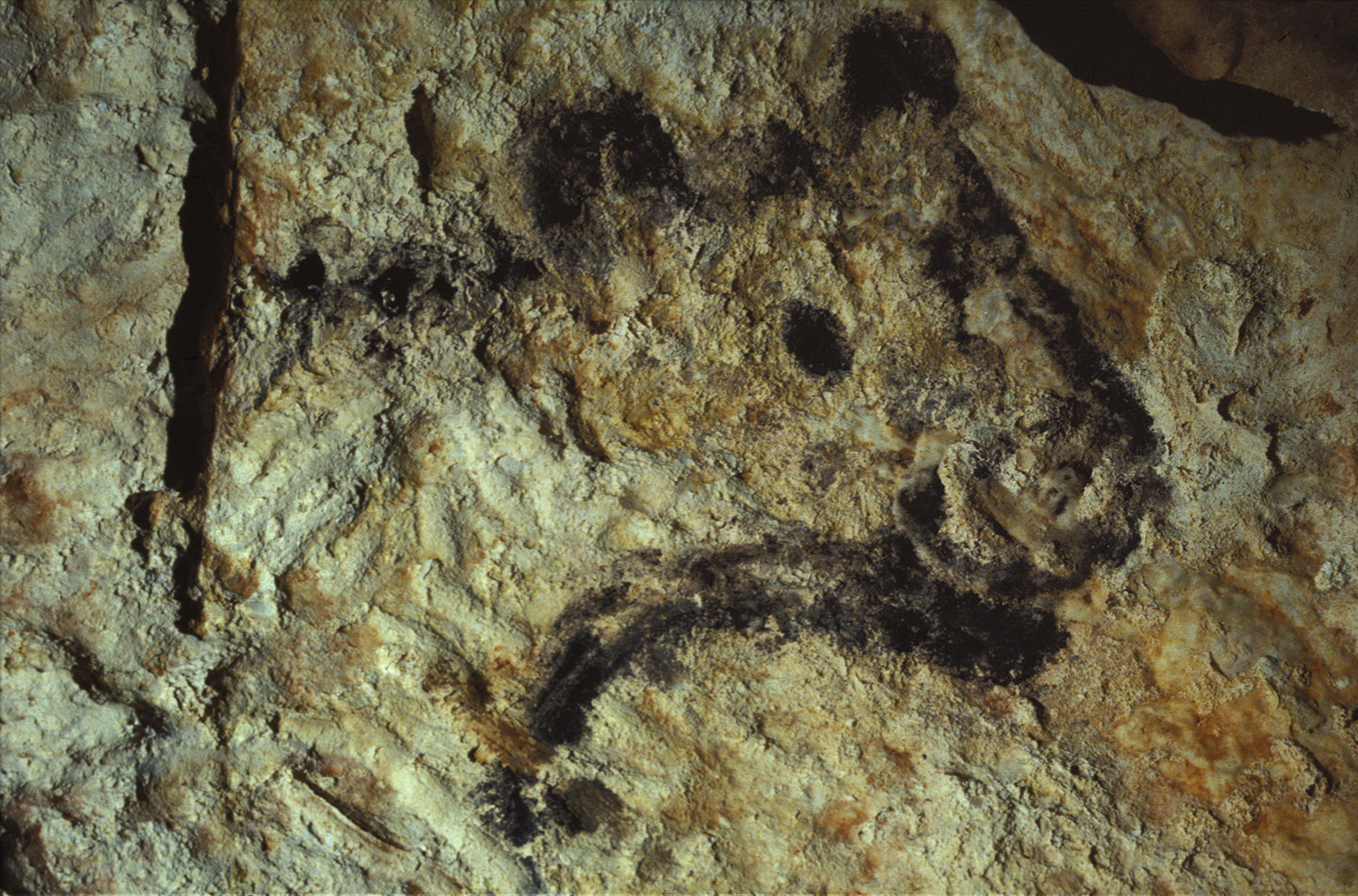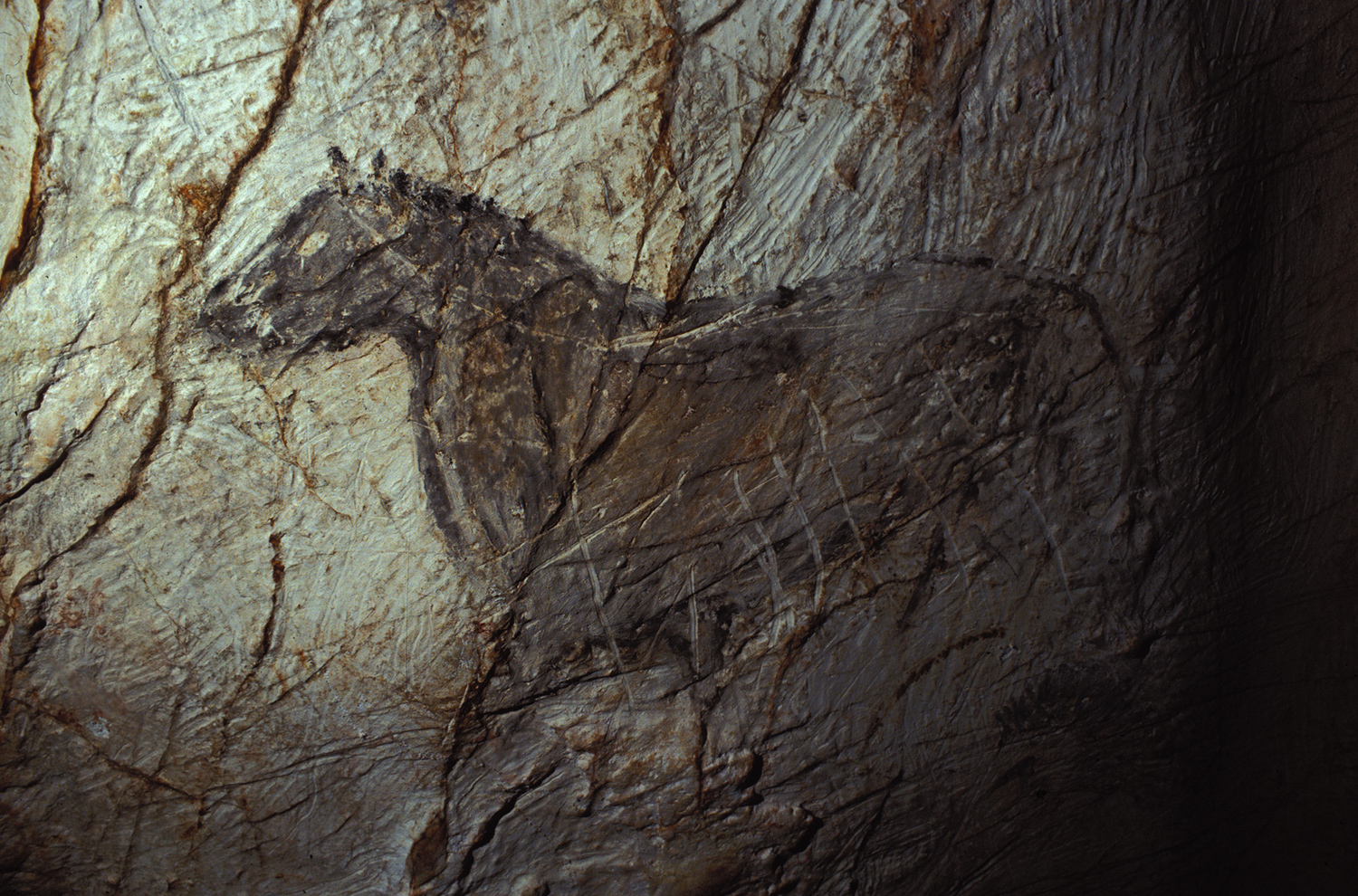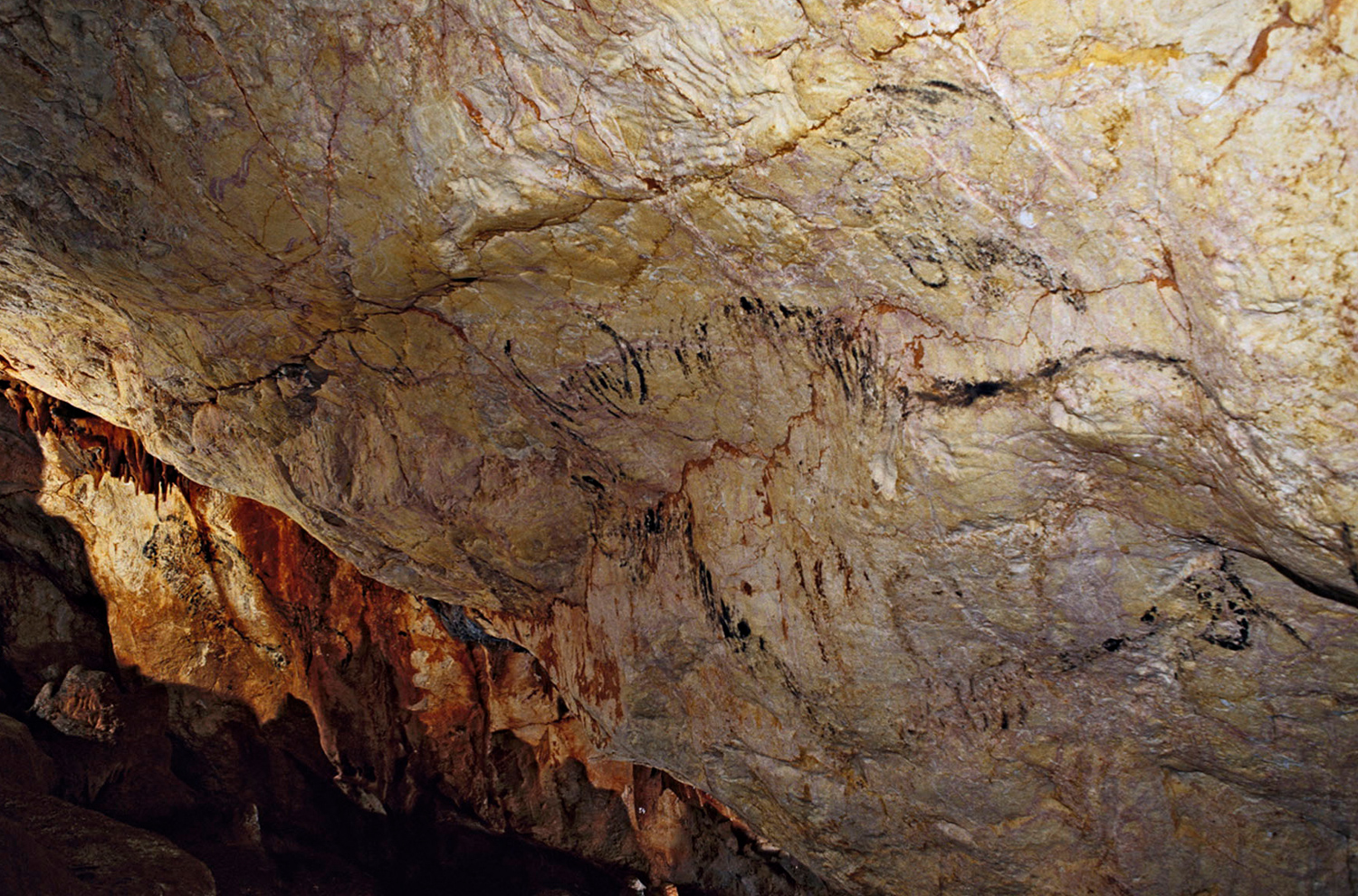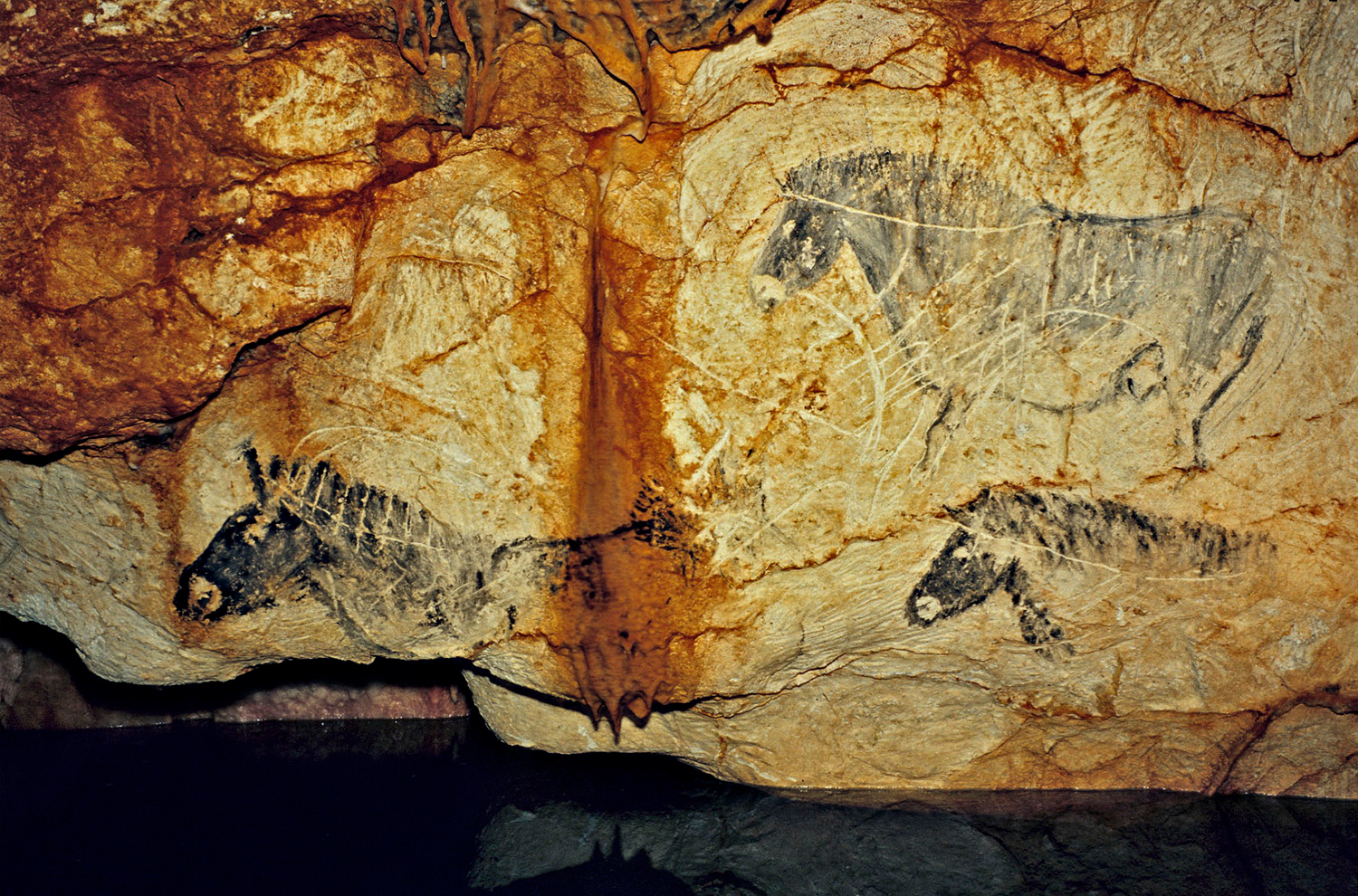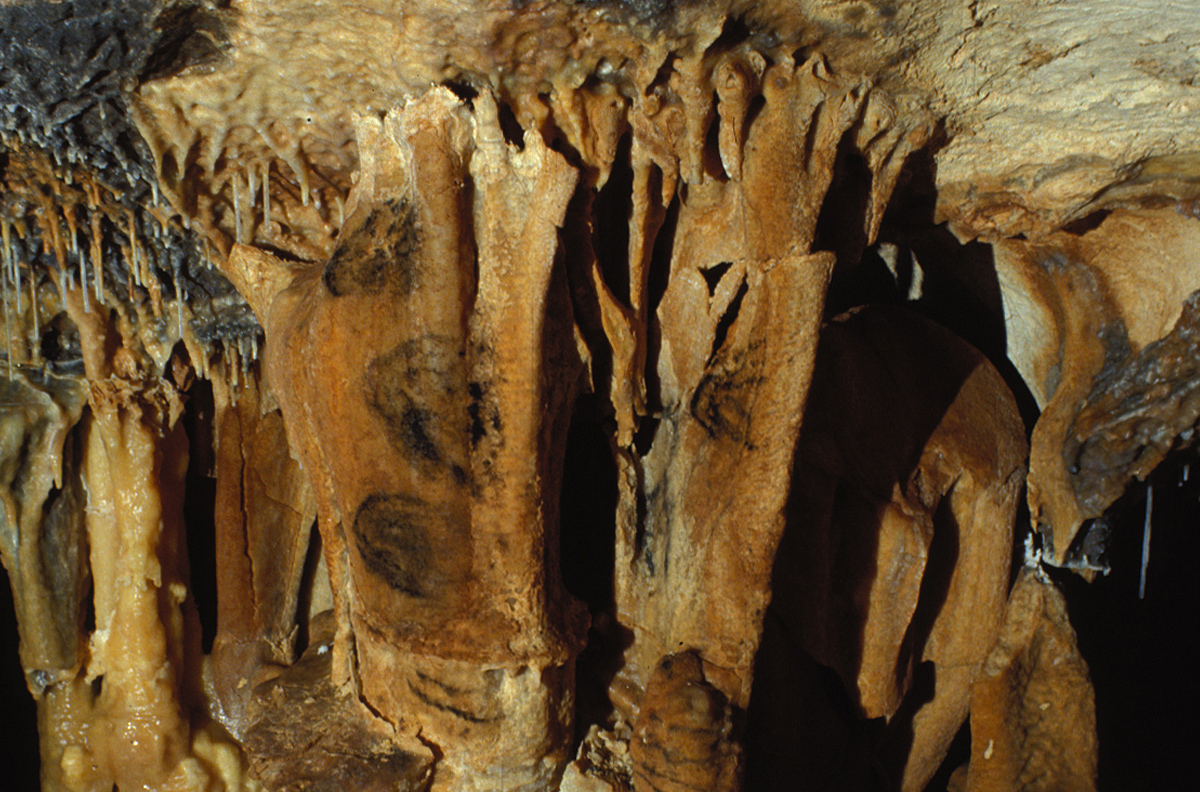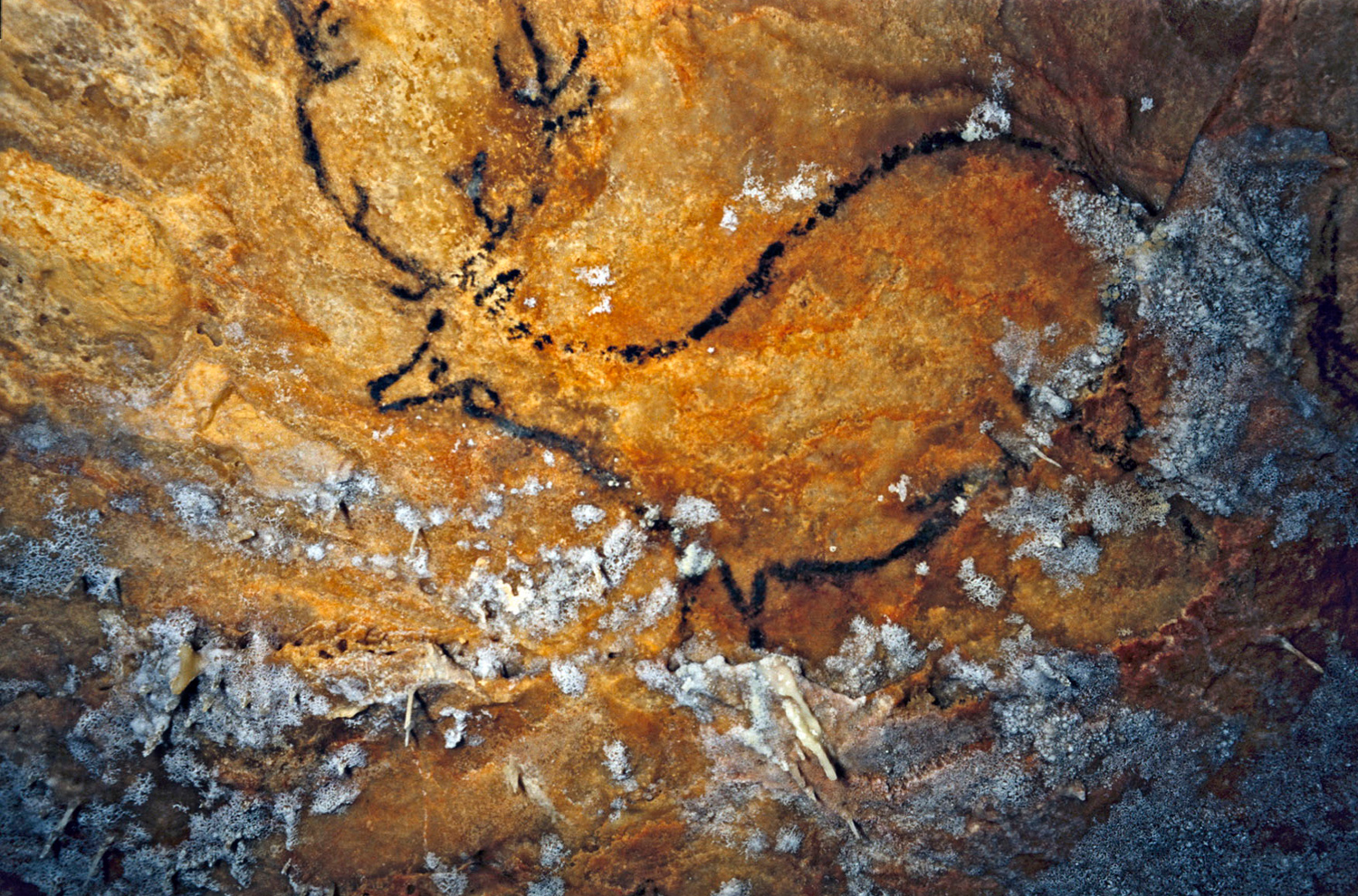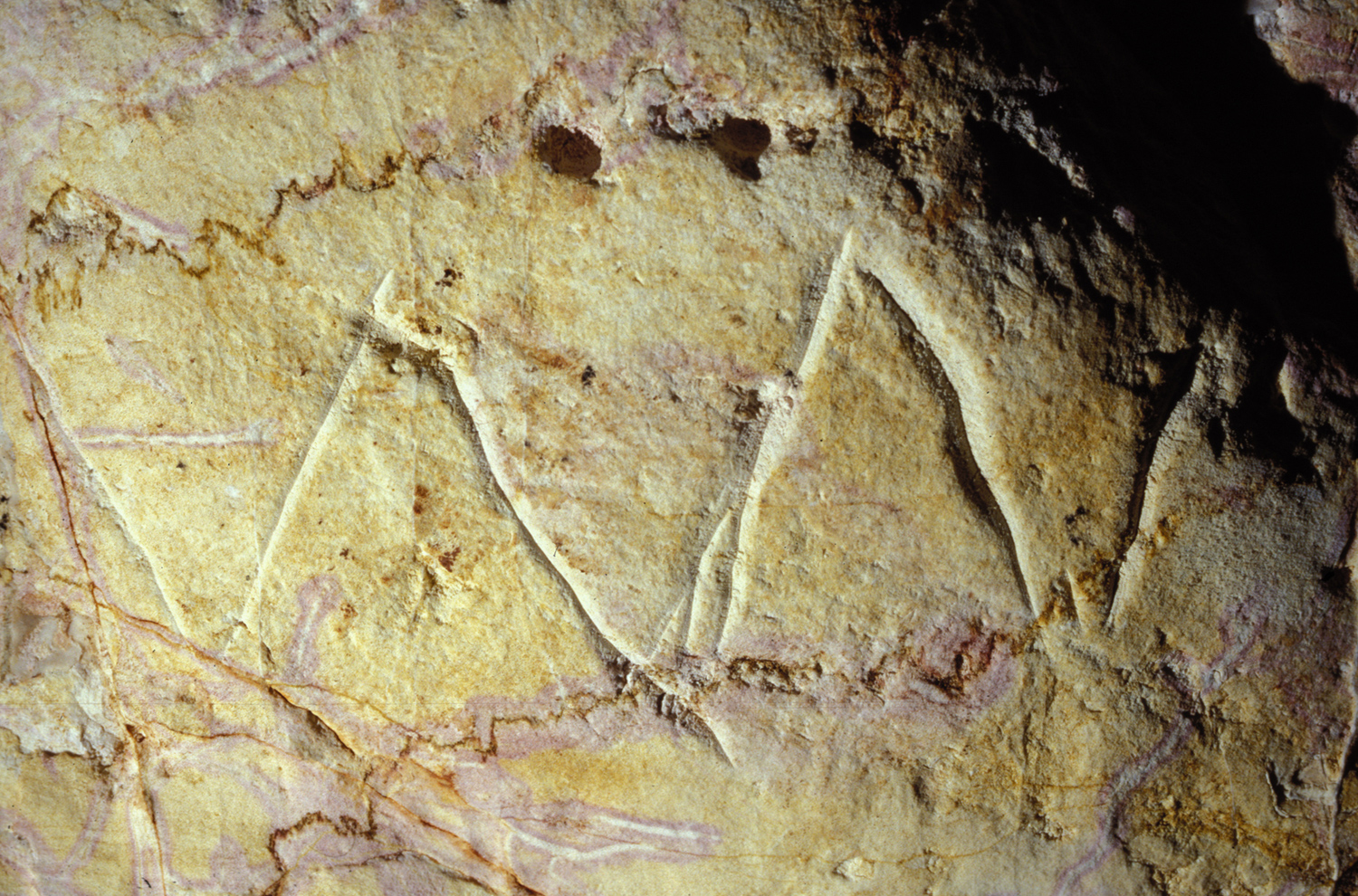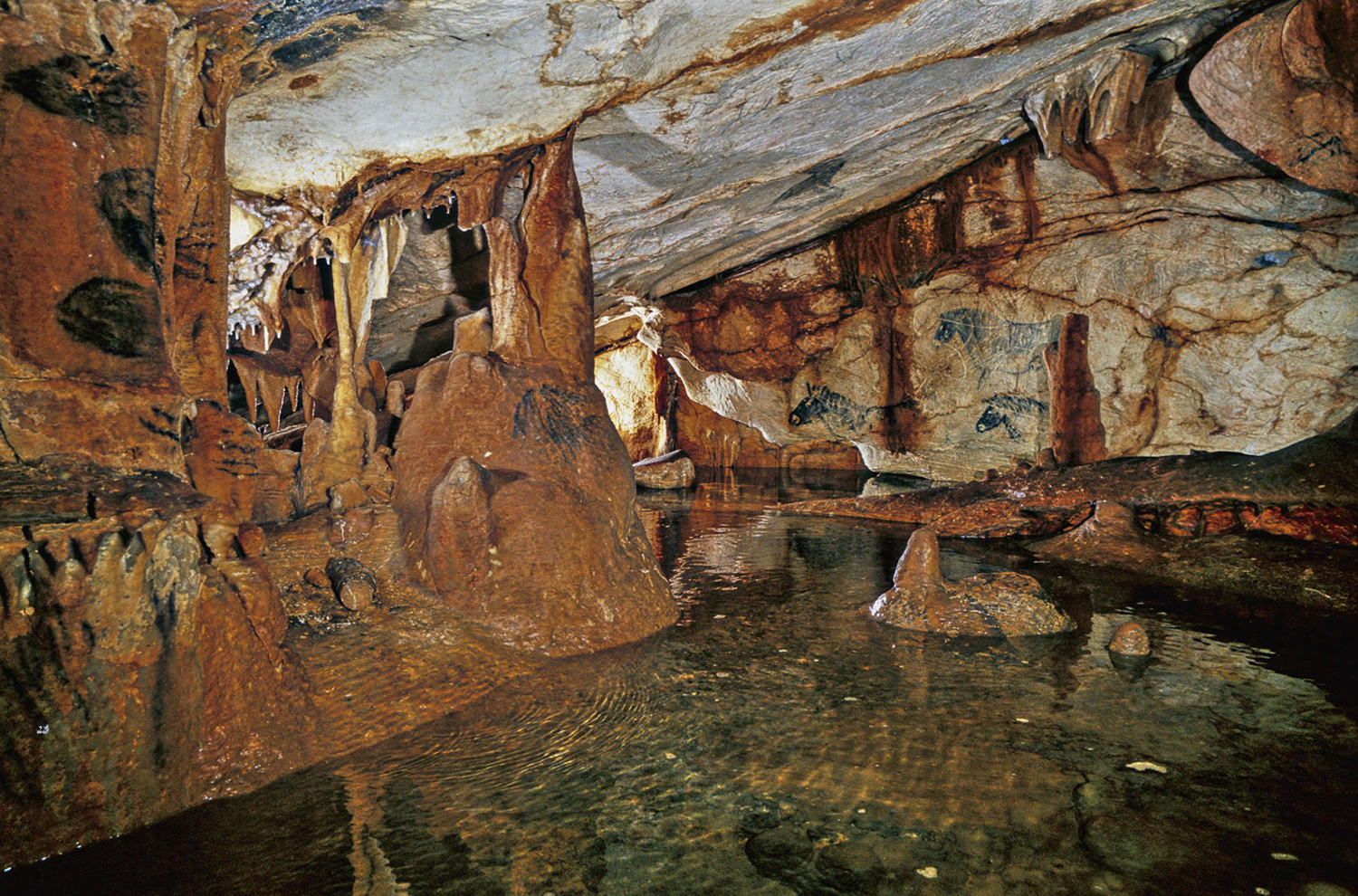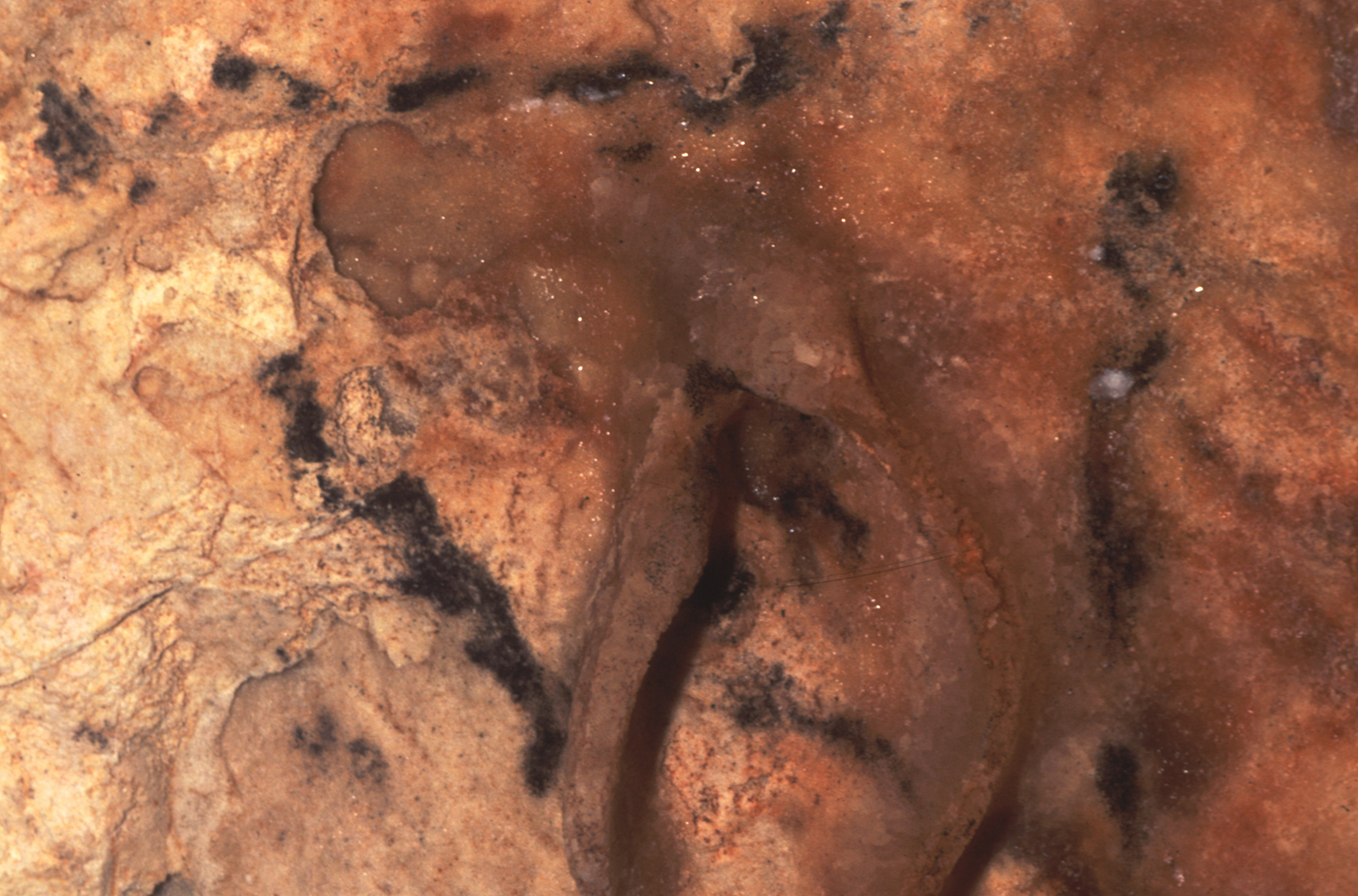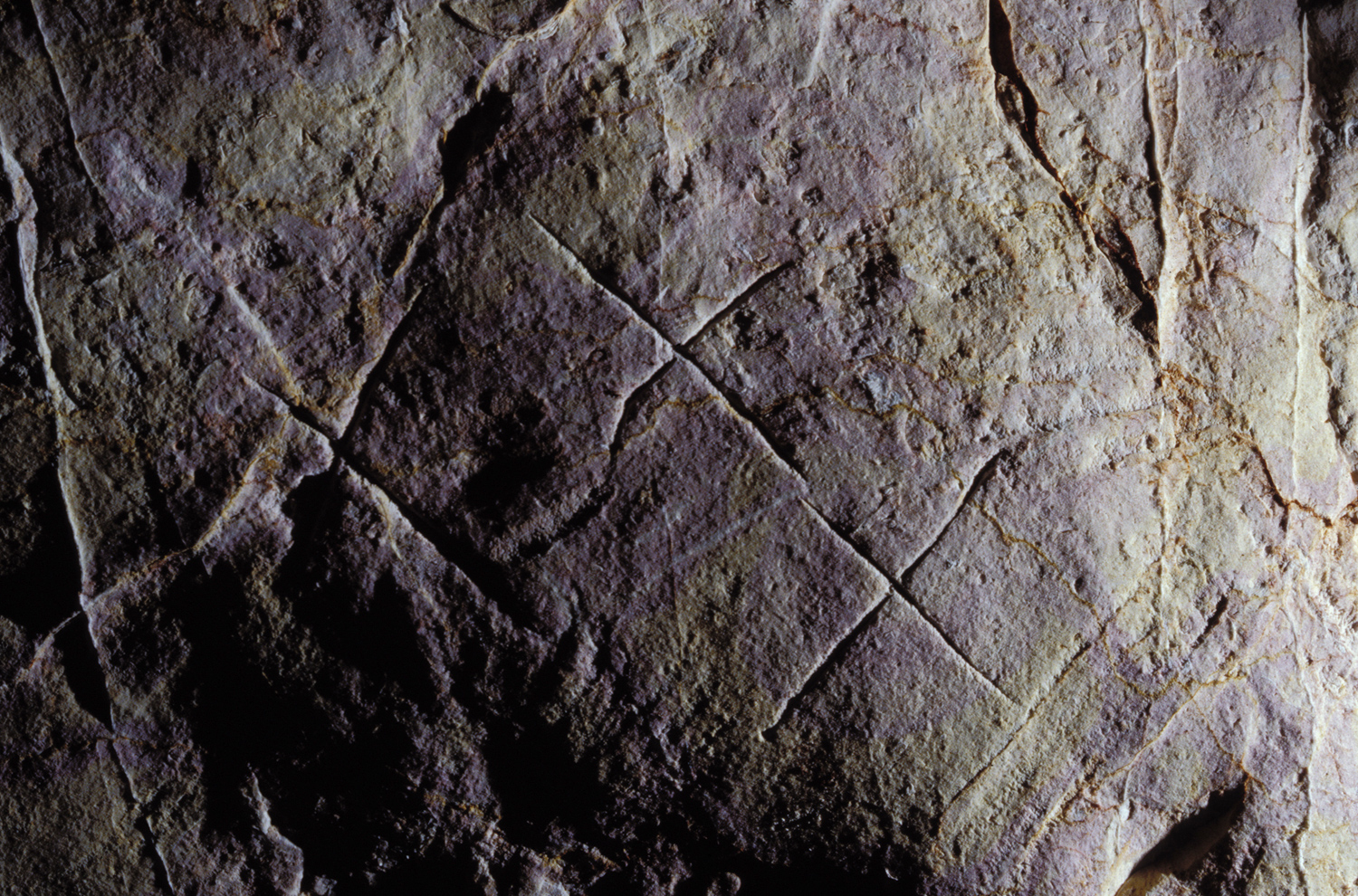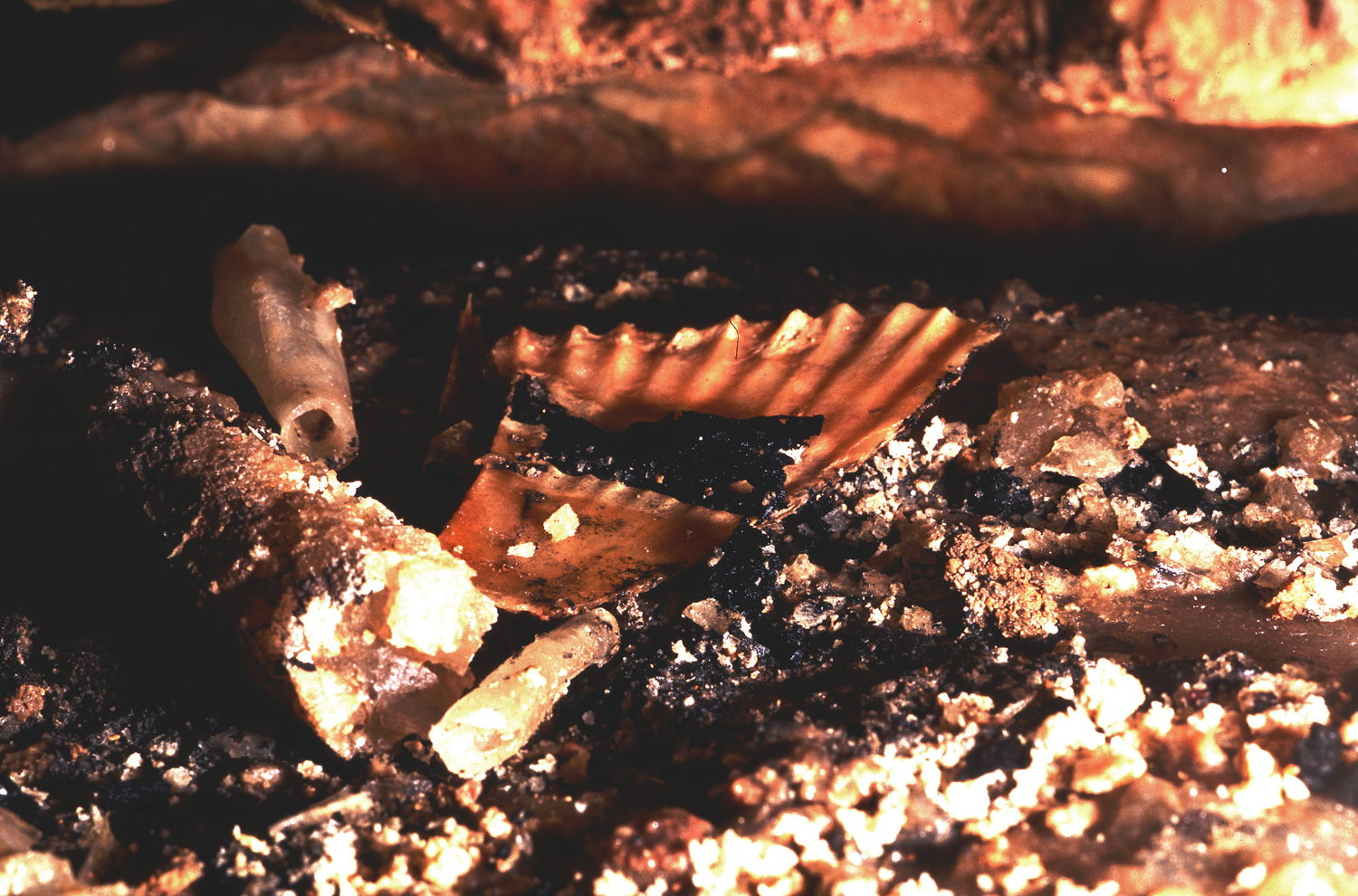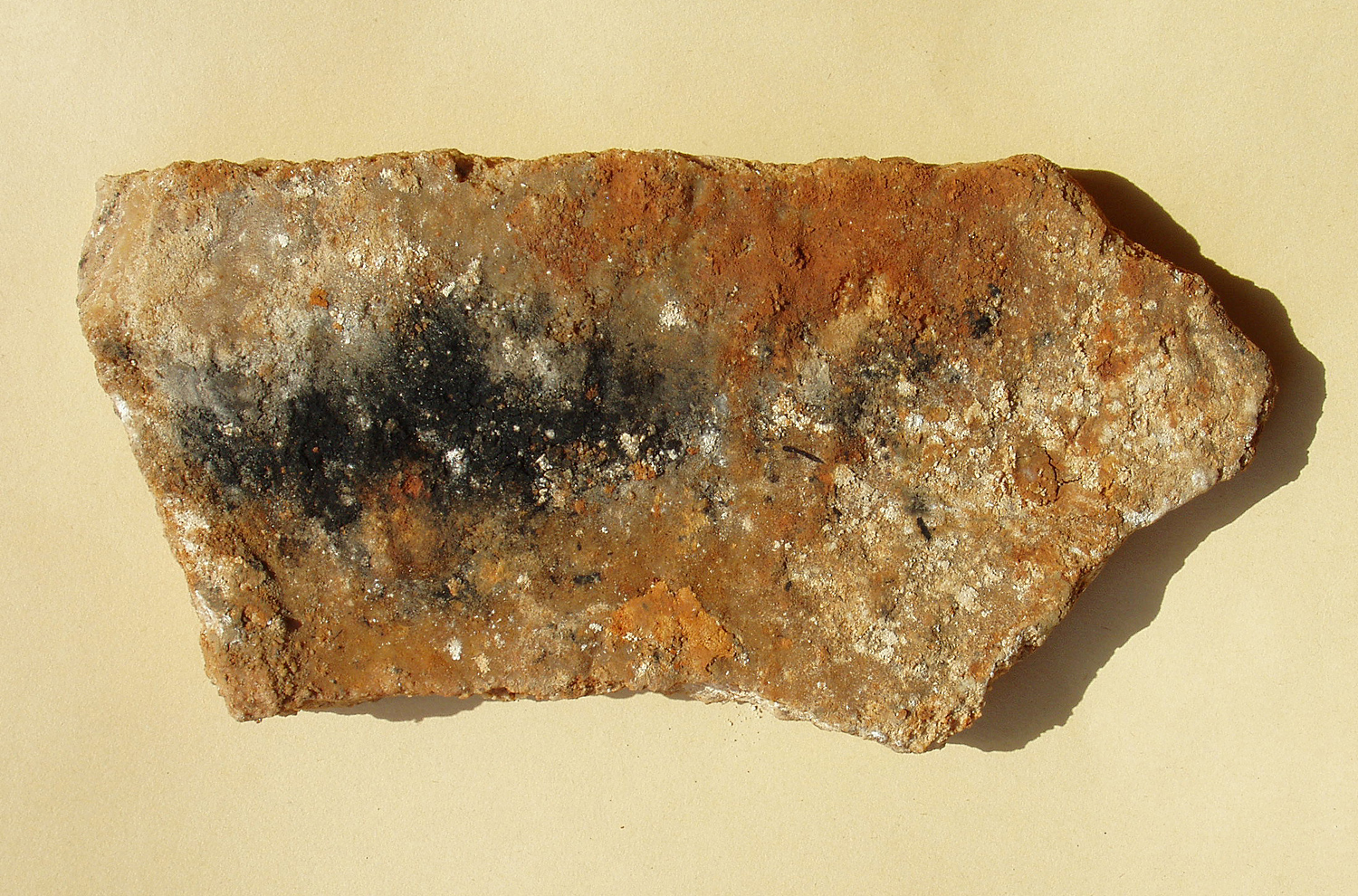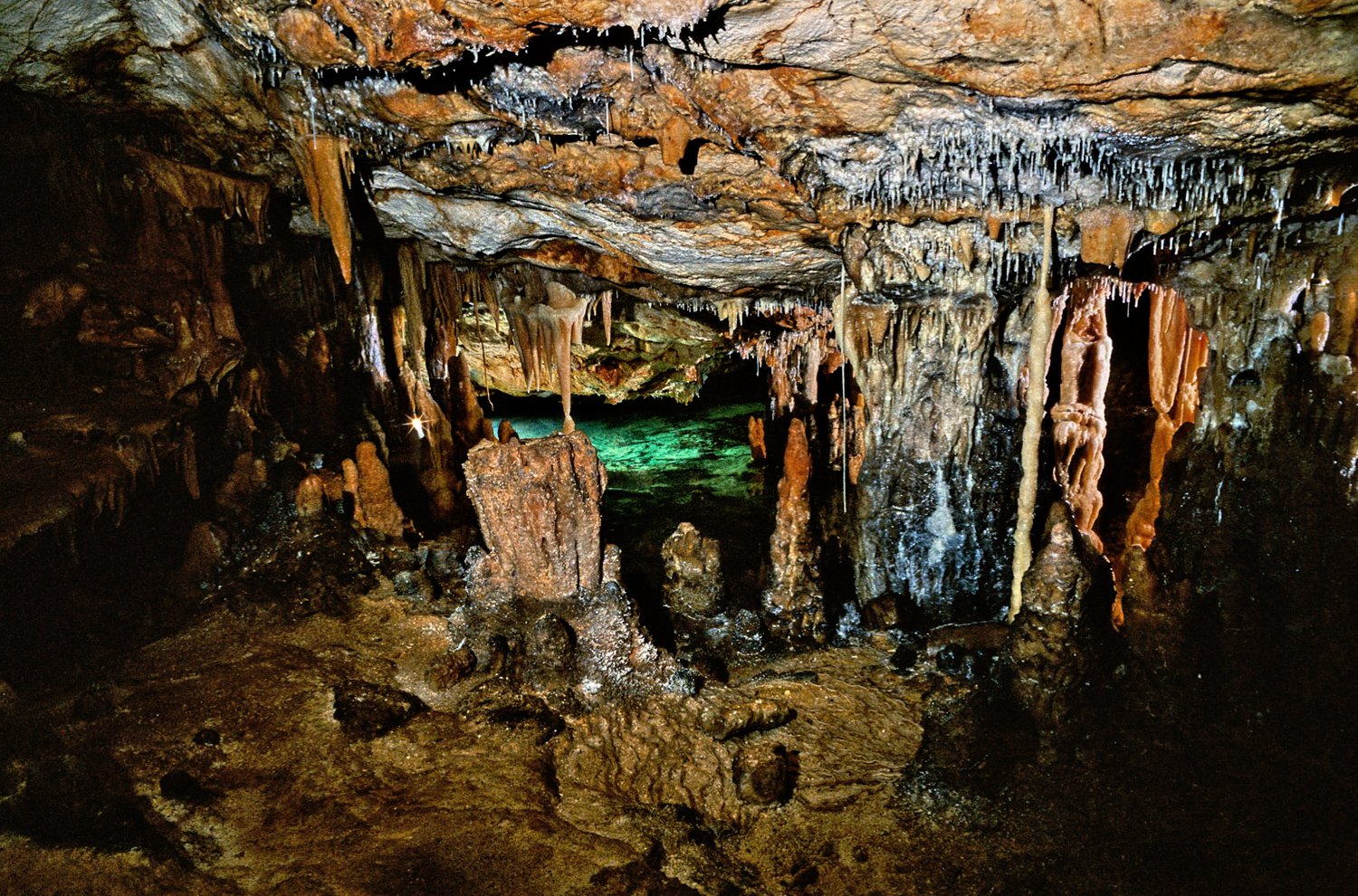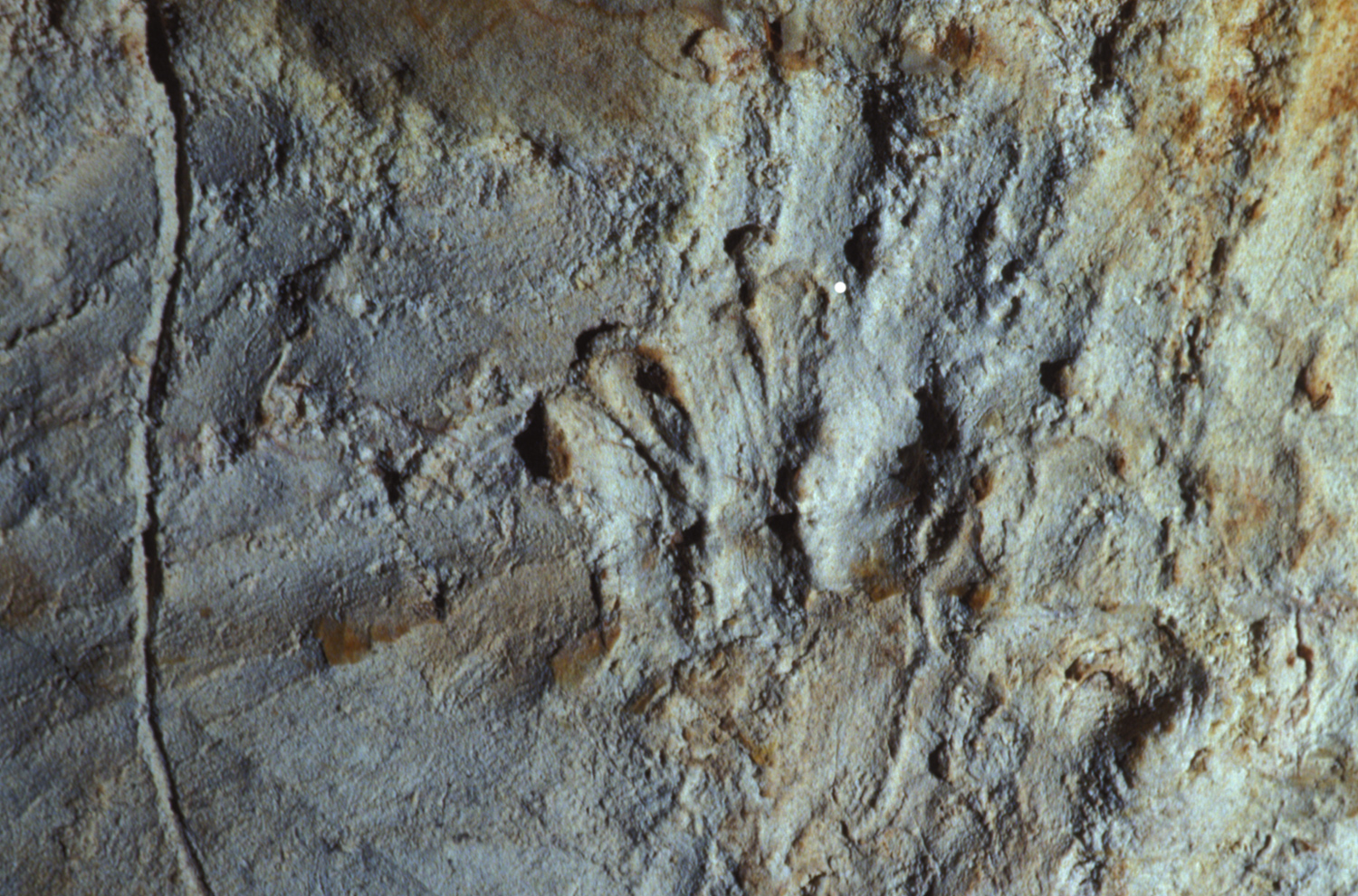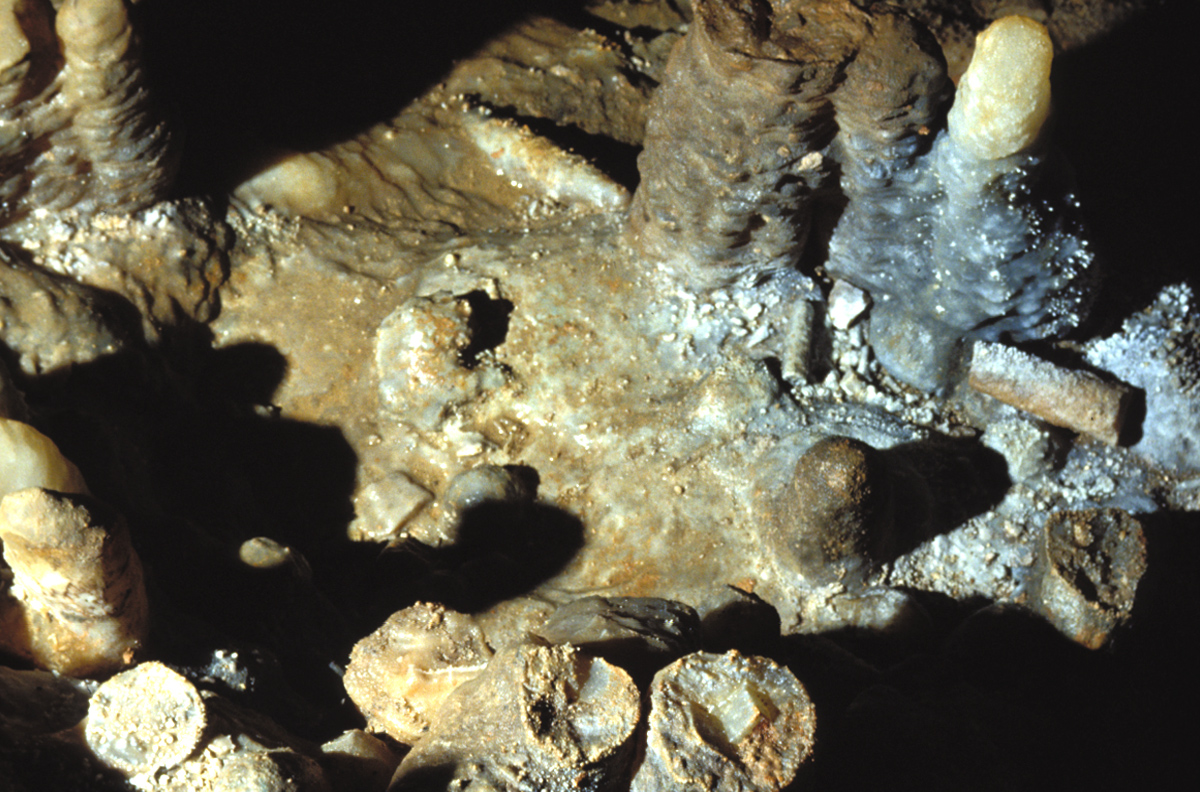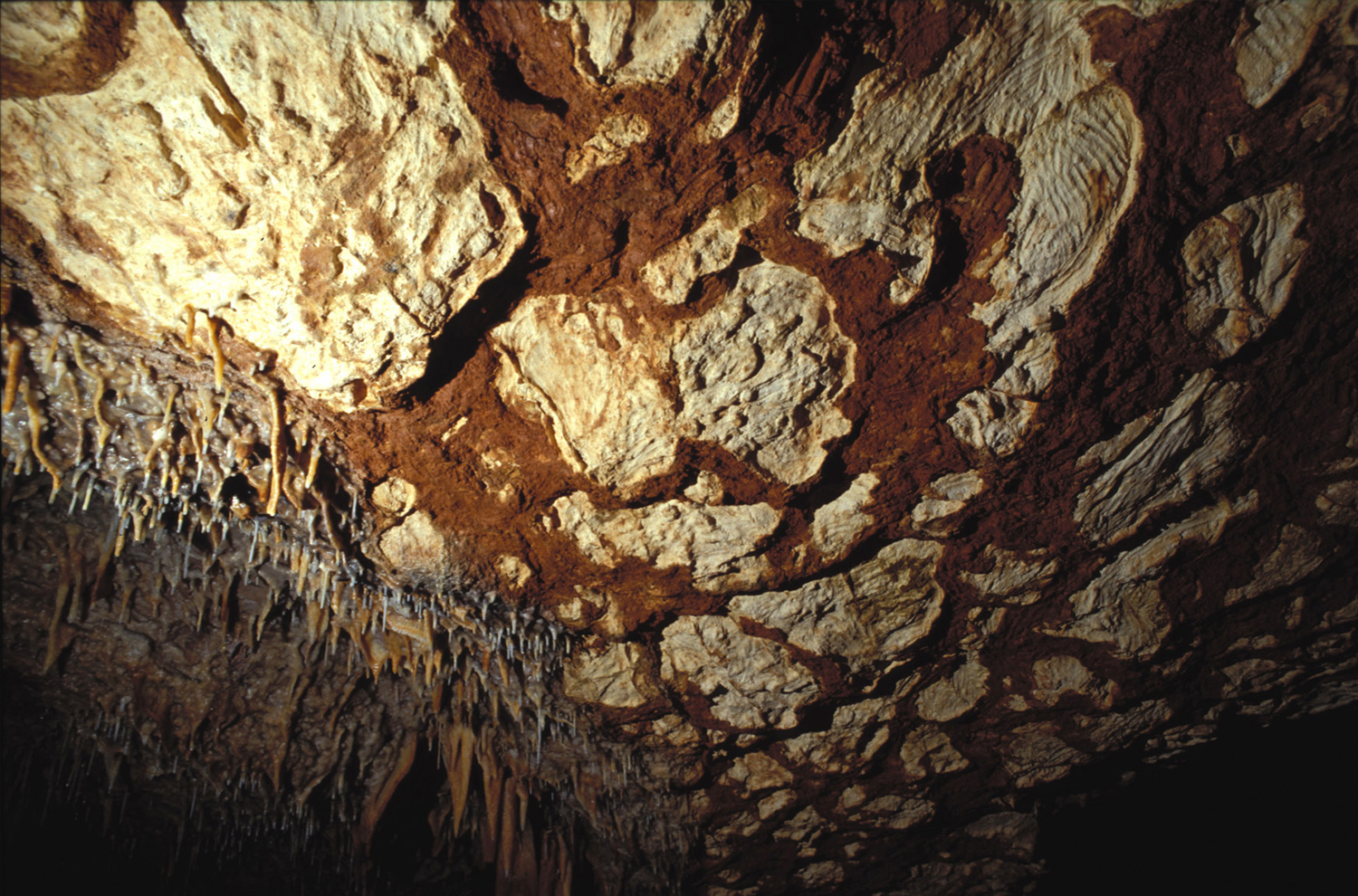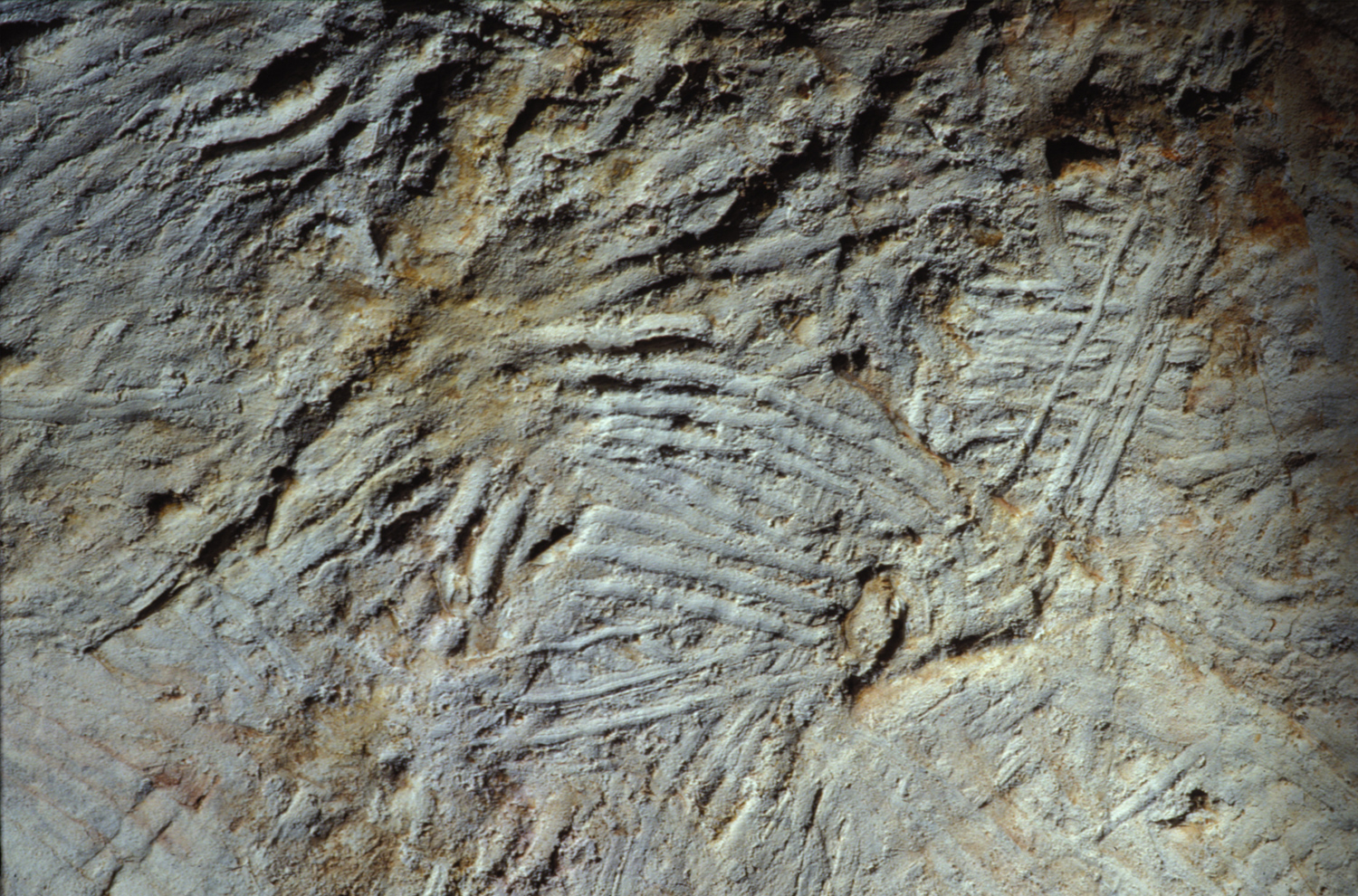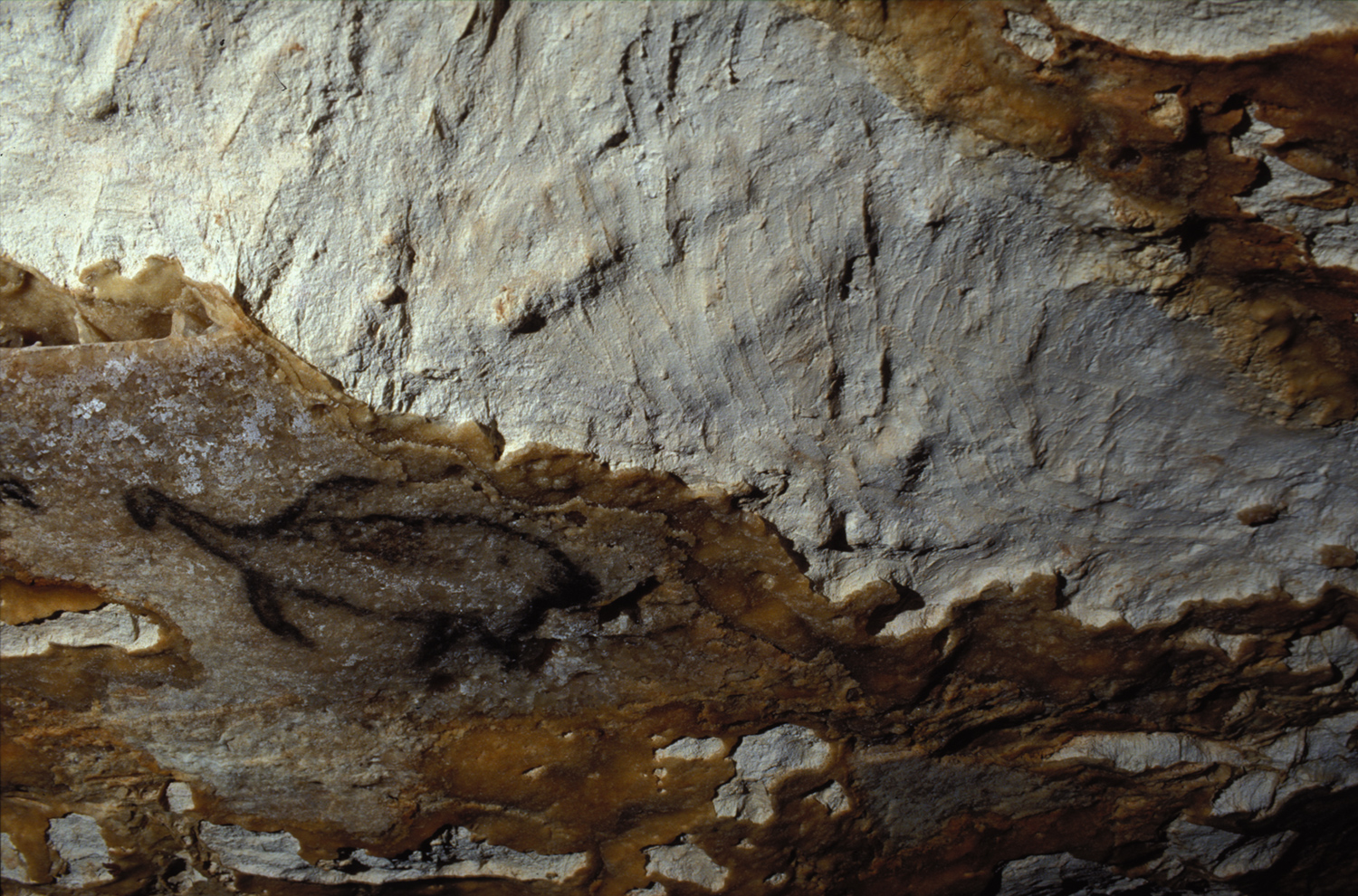


The gallery slopes up for about 360 feet under water before reaching a huge chamber that partly remained above the sea and where many prehistoric paintings and engravings are preserved on the walls, as well as remains on the ground (charcoal from fires and torches, a few flint tools). This is the only painted cave in the world with an entrance below present-day sea level where cave art has been preserved from the flooding that occurred when the seas rose after the end of the last glaciation (Clottes & Courtin 1994, 1996).
Right from the start, it was obvious that the discovery of the Cosquer Cave was both an important and original art find. It was located in a provence of France near Marseilles, an area where no Palaeolithic art had ever been discovered. This highlighted a supposedly well-known but rarely referred to problem, which is the disappearance of uncounted prehistoric caves under the sea all along the Mediterranean and other shores since Ice Age times. Several large caves are next to Cosquer. A number of them could have been - and probably were - lived in, painted or engraved.
Despite the destructions due to the sea, Cosquer ranks among the few caves where more than 150 animal figures have been found.Hand stencils now total 65, the highest number in Europe except for Gargas (Hautes-Pyrénées) and possibly El Castillo in Spain. They are all located in the east side of the chamber, with one in the south. None is in the west. Right at the brink of a 57 feet deep vertical shaft – a location which in itself is significant - they are all black. On other panels, they may be black or red. One positive red hand has been found. A number of hand stencils have been scratched or painted over with dots and bars.
Only adult hand stencils have been found. Many of them have incomplete fingers: they were realized by bending the fingers. Hand stencils with incomplete fingers had until very recently only been found in very few caves, mostly in the Pyrénées (Gargas, Tibiran, Fuente del Trucho). Now, we know that the phenomenon was far more widely represented than had been thought. The now established fact that roughly at the same time such hand stencils were being made in sites hundreds of miles apart should deal a death blow to the theory of pathologic mutilations: how likely would it be that human groups living at such distances from one another should independently develop the same crippling diseases and should react in the same way by immortalizing them on the walls of the caves by means of the same techniques?
Already, Cosquer has significantly added to our knowledge of cave art. The presence of many sea animals and that of unusually numerous ibex and chamois testify to the influence the local environment played in the myths. The Cosquer Cave was located a few miles from the shore in an environment of limestone hills favourable to these animals. It is no coincidence then that the artists chose to represent the local fauna. This has not always been the case. In the deep Vicdessos valley, in the Ariège Pyrénées, where the Magdalenians of La Vache mostly hunted ibex, the cave art of Niaux, the cave right across the valley half an hour’s walk from La Vache, shows an overwhelming majority of bison and horses.
Right from the beginning, by studying superimpositions of figures, we could determine the two main phases in the art of Cosquer, the earlier one including the hand stencils and the finger tracings, while most of the animal paintings and engravings appeared to belong to the later phase. This was confirmed by direct radiocarbon dating, when 27 dates were obtained which for the most part cluster into two groups, one around 19,000 BP and the other around 27,000 BP. After the Chauvet Cave, Cosquer is the rock art site where most radiocarbon datings have been made in the world (Clottes & Courtin 1994, 1996, Clottes et al. 1996, 1997).
In the summers of 2002 and mostly of 2003, after one of us (Jean Clottes) learnt how to scuba-dive for the express purpose of going to the cave, we did an in-depth study of it. First, we carried out a careful examination of the walls and roofs with the help of LED lamps, which are the best sources of light to discover fine engravings, to work out their superimpositions and, more generally, to study the traces of human activities on the surfaces. As we proceeded with the examination, we checked the already existing descriptive forms (from the data recorded before) and completed them according to the criteria we had worked out, so that they would be homogeneous. All the drawings were systematically measured, as well as their height in relation to the ground, and we recorded their characteristics, those of the wall and of the ground, the superimpositions and the presence of other images nearby. Each was precisely pinpointed. Each was also sketched on the form. This systematic work enabled us to find out many errors which we corrected and to discover a number of new images that had gone unnoticed till now. That work and all the conclusions it led us to have just been extensively published in a new book (Clottes, Courtin, Vanrell 2005).
The total of figures is now 177 animals. They belong to 11 different species, which is rather unusual in Upper Palaeolithic art, since if 14 species are represented in Chauvet, only 6 are known in Niaux and 9 in Lascaux. The 11 species in Cosquer are horses, bison, aurochs, ibex, chamois, saiga antelope, red deer (stags and does), megaloceros deer, feline, auks, seals. In addition, we have discovered 1 human with a seal's head, 44 black hand stencils and 21 red hand stencils, 216 geometric signs, 20 indeterminate figures, 7 others (like traces, holes in the walls, etc). We have now 78 more animal figures than those recorded in our preliminary book (Clottes & Courtin 1994, 1996).
We can now state that the Cosquer Cave used to be one of the most important cave art sites in Europe, comparable to Lascaux, Trois-Frères, Altamira or Chauvet. This is because we are only left with a small part of the art. Exploring the submerged passages and chambers has shown that between three quarters to four fifths of the whole network is now under water where the walls and vaults are corroded by the sea and by the shells and algae so that no painting or engraving could be preserved.
As all the parts of the cave which were accessible where the water did not reach are covered with engravings, finger flutings and drawings, we can assume that it was more or less the same in most of the submerged chambers: the level of the sea could not coincidentally have stopped just before the places where the art happened to be. Therefore there could originally have been anything between 400 and 800 animal figures in the cave.
The animals most often represented are the horses (63) sometimes entire, at other times with just their heads, then the ibex (28), the bison and aurochs (24) and the red deer (15) i.e. stags and does. The other animals are far more rare: 4 chamois, 2 megaloceros deer, 1 feline, 1 saiga antelope. Sea animals are fairly common (17), far more than in any other cave: 9 seals, 4 fish, 3 auks. We can add 20 animal figures that could not be identified precisely and 3 composite animals (i.e. with characteristics pertaining to different species).
Some of the results we have obtained during our research of Cosquer cave - in addition to the inventory of the rock art, to numerous details relating to the cave art (animals and original signs), to the use of the Cosquer cave and to the people who frequented it - are the following:
- A number of small animal engravings - which had been seen in 1992 but had remained unstudied - are to be found on the slanting wall next to the big now submerged shaft, which we have called the Big Shaft. They are difficult of access because the water is quite deep at the foot of the wall. The lower level of the water during our second spell of field work in 2003 has enabled us to spend more time there and to take close-ups of those engravings and of the black hand stencils nearby. Contrary to what we had thought first, we found out that they had been done before the hand stencils, because one of those hand stencils was on top of these engravings. This means that part of the animals were done during what we called Phase 1 by the Gravettians, between 26,000 and 28,000 BP, which is an important new fact;
- In addition to the phallus already described (Clottes, Courtin, Collina-Girard 1996), other sexual symbols, both male and female, have been observed. In particular, a few natural hollows on the walls have been marked with black to transform them into female sexual organs;
- Among the rare objects found in the cave are a Pecten shell in which a big live coal had been put, a piece of clay which has been kneaded and bears distinct traces of fingers and nails, and also a flat calcite plaque which was worked and used as a makeshift lamp.
- Handprints of children have been observed in the mondmilch (i.e. the white altered soft surface of the limestone wall) of relatively high walls, at more than eight feet from the ground. This means that kids did have access to the deepest parts of the cave, and also that they were held up at arm's length or on the shoulders of grown-ups so that they could imprint their hands high up on the surface of the walls. This cannot be construed as a random gesture but as a very deliberate action;
- As to the grown-ups themselves, some of them must have been at least six feet tall to have been able to make engravings where they did, in the impossibility of using ladders in those particular places;
- A number of broken stalactites and stalagmites have been observed in numerous places. This is neither gratuitous vandalism nor a destruction meant to facilitate going from one place to the other, as most of them are in places where they could not get in the way. In most cases, the broken pieces have not been found. We have also carefully examined the stalagmites and stalactites located in the higher parts of the cave, in passages which remained unreachable to prehistoric people and where not a single trace or charcoal was ever found: those concretions have never been broken. This proves that the breakage we have noticed cannot have been due to natural causes like earthquakes;
- All over the cave, in the parts which remained above the water, the surface of the walls has been scraped and thousands of traces of the scraping are inscribed there (see photographs below). The red clay was used as a makeshift pigment to make the red hand stencils. The whitish mondmilch (degraded surface of the limestone walls) has been removed, sometimes as deep as one or two inches. From the superimpositions of engravings and paintings we can tell that these activities took place during the main two periods when the cave was frequented. At the foot of the walls or vaults where they scraped the surfaces, when the ground is intact, very few traces remain. One must conclude that they took the white mondmilch away for their own purposes.
Our project has been funded by the French Ministry of Culture and by the Leakey Foundation. We gratefully thank them as well as all those who have helped us, both during the dives and expeditions and by giving us information. We also thank our publishers, Les Éditions du Seuil (Paris) for having quickly published our work in a beautiful volume. The gist of this article has been published in INORA 42 (International Newsletter on Rock Art 2005, 42).
ReferencesCLOTTES J. & COURTIN J. 1994.
La Grotte Cosquer. Peintures et gravures de la caverne engloutie. Paris. Le Seuil.
CLOTTES J. & COURTIN J. 1996.
The Cave Beneath the Sea. Paleolithic Images at Cosquer. New-York, Harry Abrams.
CLOTTES J., COURTIN J. & COLLINA-GIRARD J. 1996.
More reseaarch on the Cosquer Cave. INORA 15: 1-2.
CLOTTES J., COURTIN J., COLLINA-GIRARD J., ARNOLD M. & VALLADAS H. 1997.
News from Cosquer Cave : climatic studies, recording, sampling, dates.
Antiquity 71, 272: 321-326.
CLOTTES J., COURTIN J. & VANRELL L. 2005.
Cosquer redécouvert. Paris, Le Seuil.
HILL C. & FORTI P. 1997.
Cave Minerals of the World. Huntsville, National Speleological Society.
→ France Rock Art & Cave Paintings Archive
→ Chauvet Cave
→ Lascaux Cave
→ Niaux Cave
→ Cosquer Cave
→ Rouffignac Cave - Cave of the Hundred Mammoths
→ Bison of Tuc D'Audoubert
→ Geometric Signs & Symbols in Rock Art
→ The Paleolithic Cave Art of France
→ Dr Jean Clottes
→ Bradshaw Foundation
→ Rock Art Network
